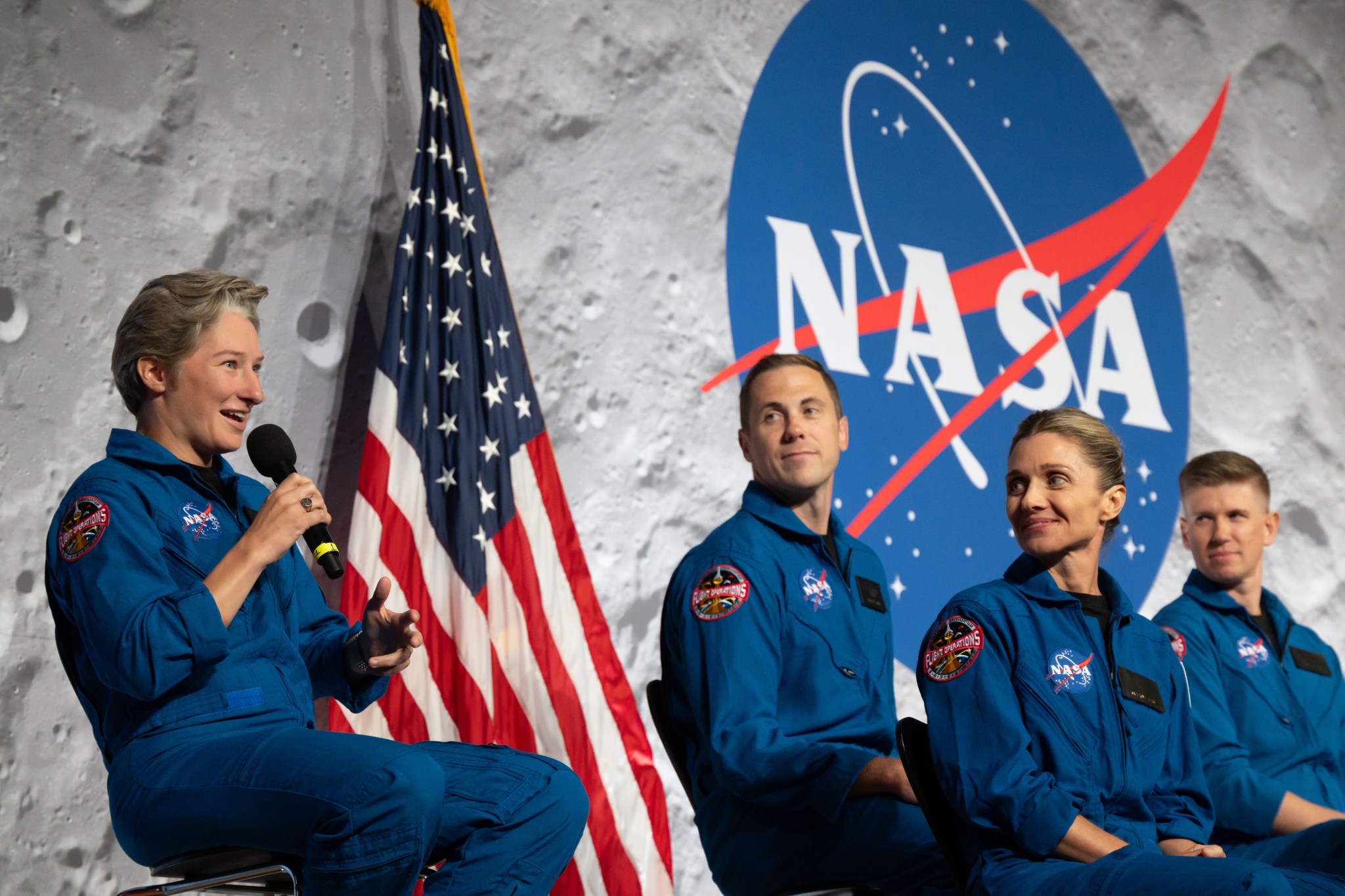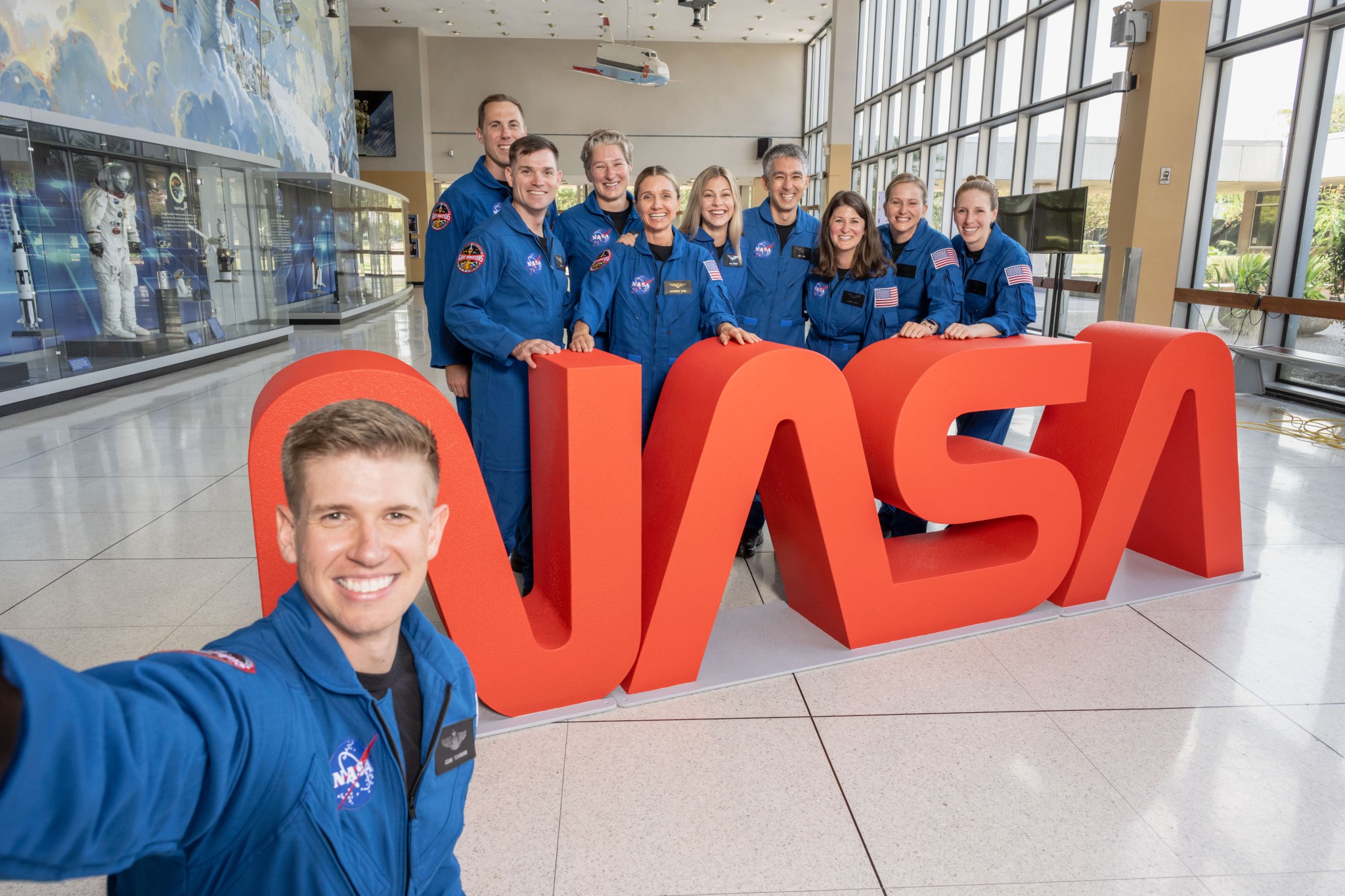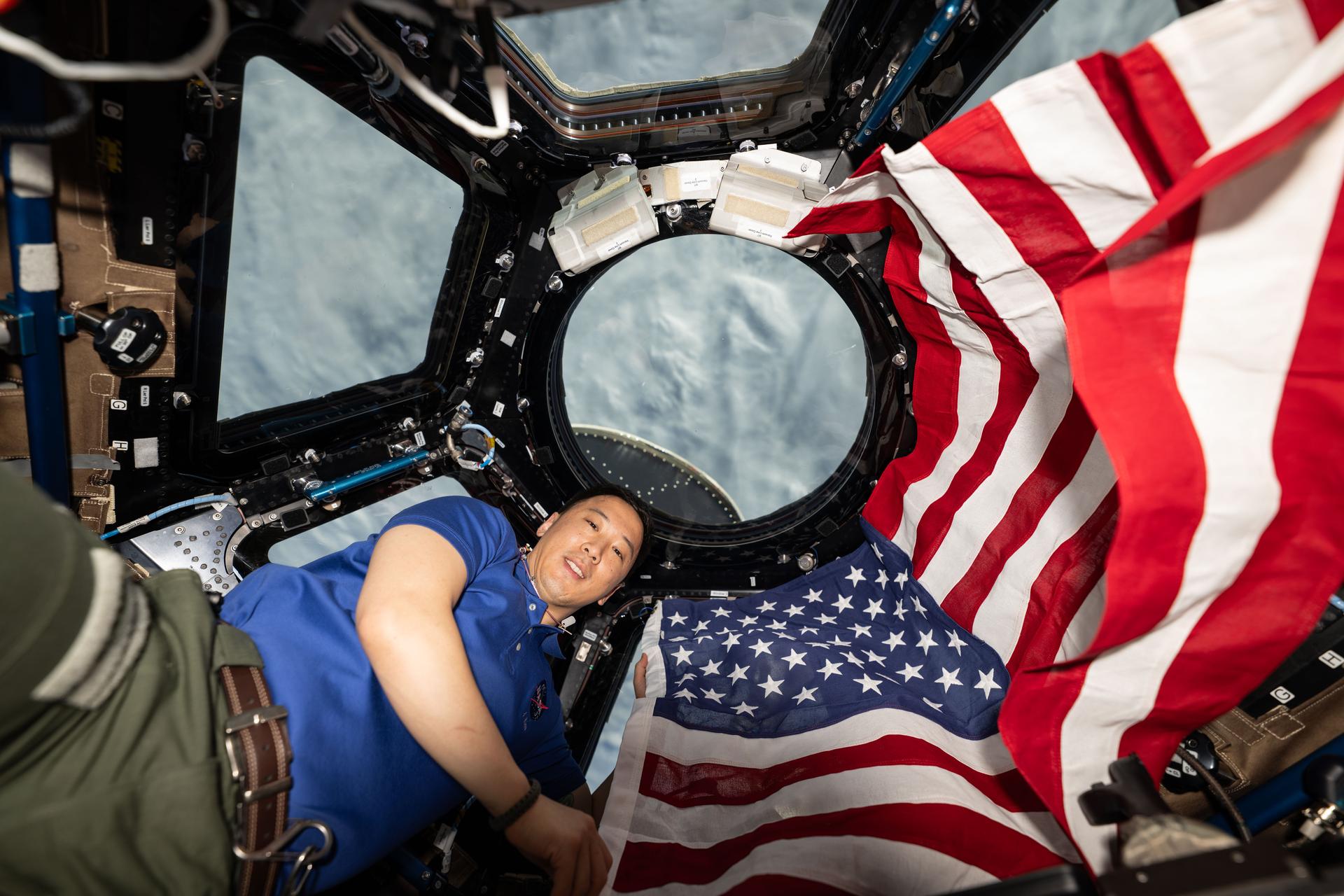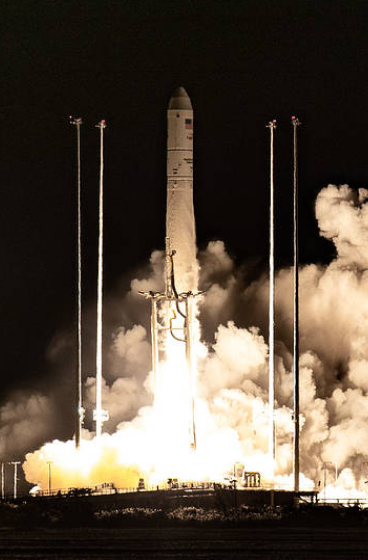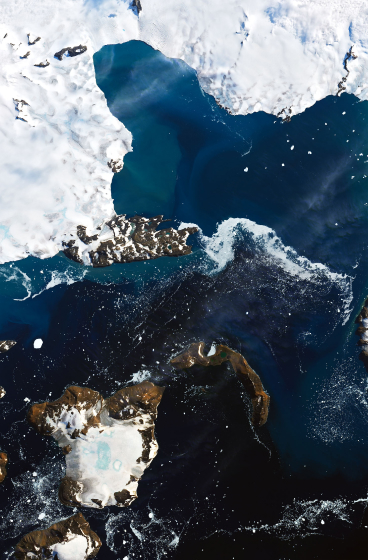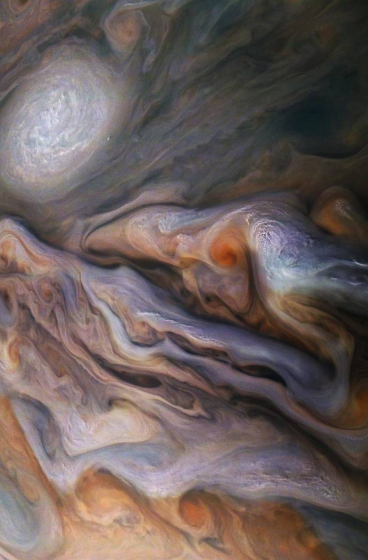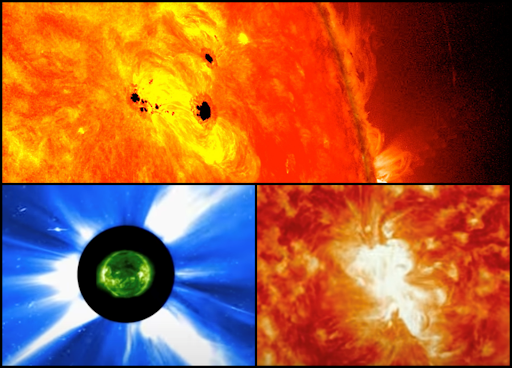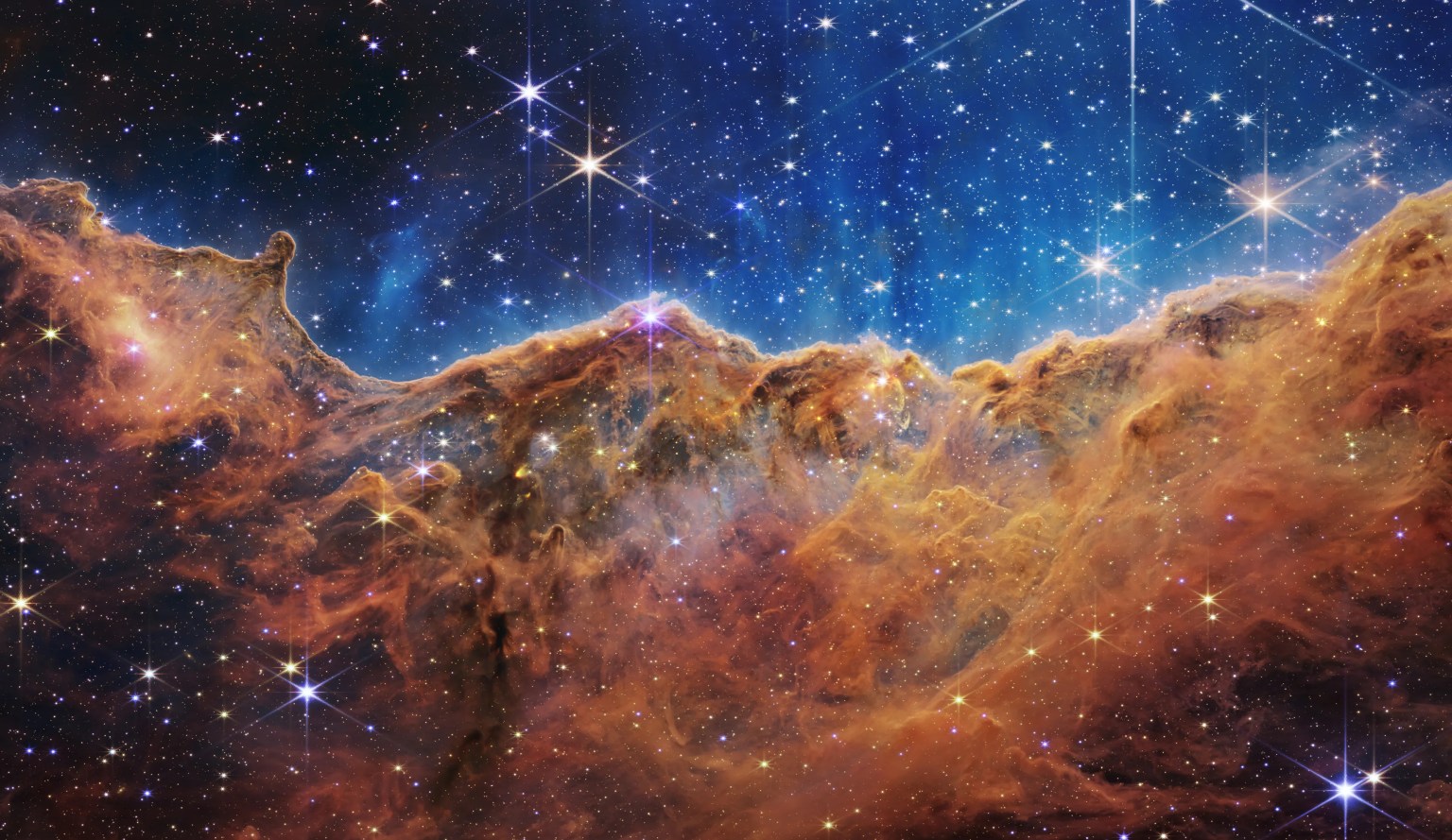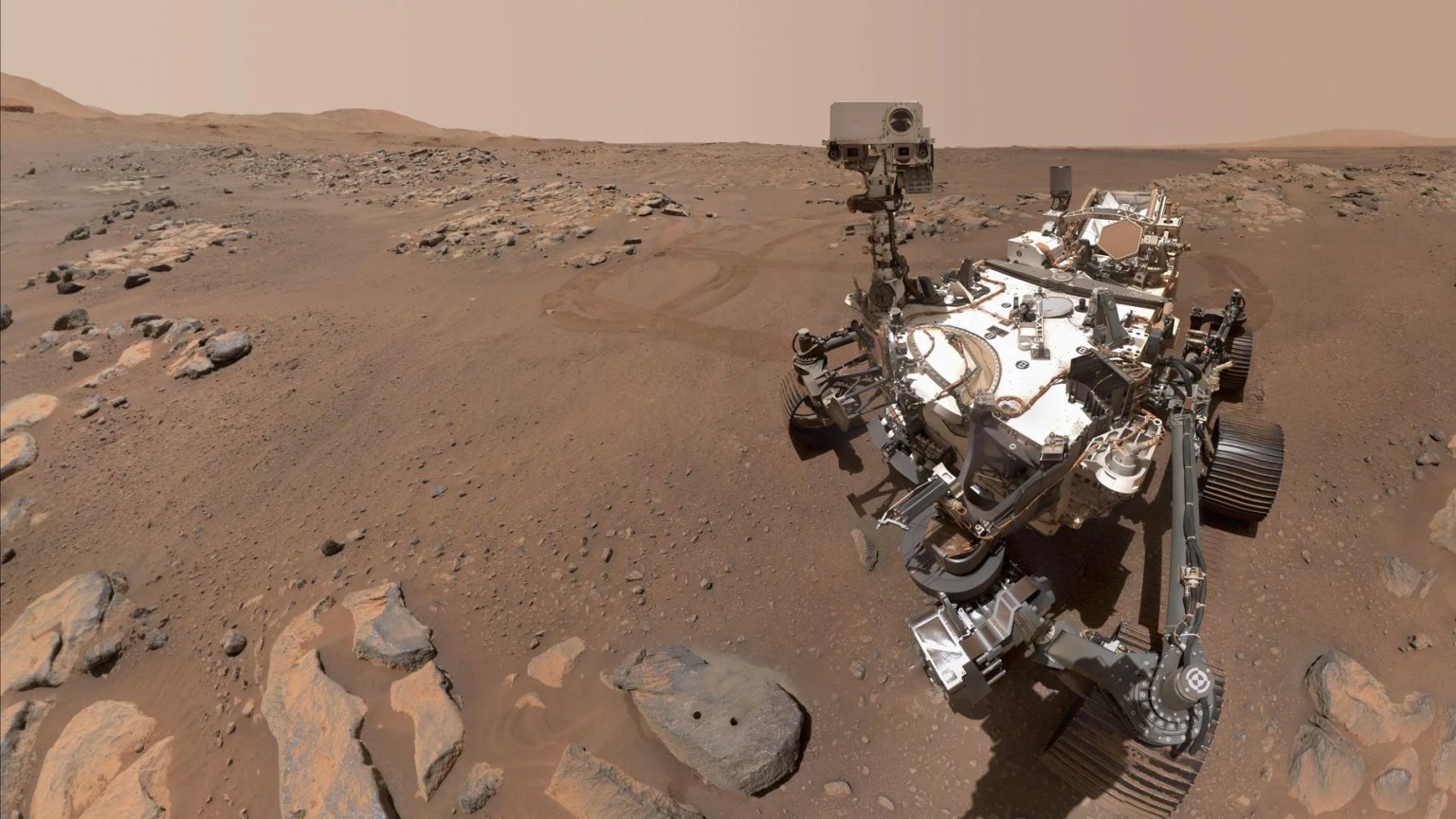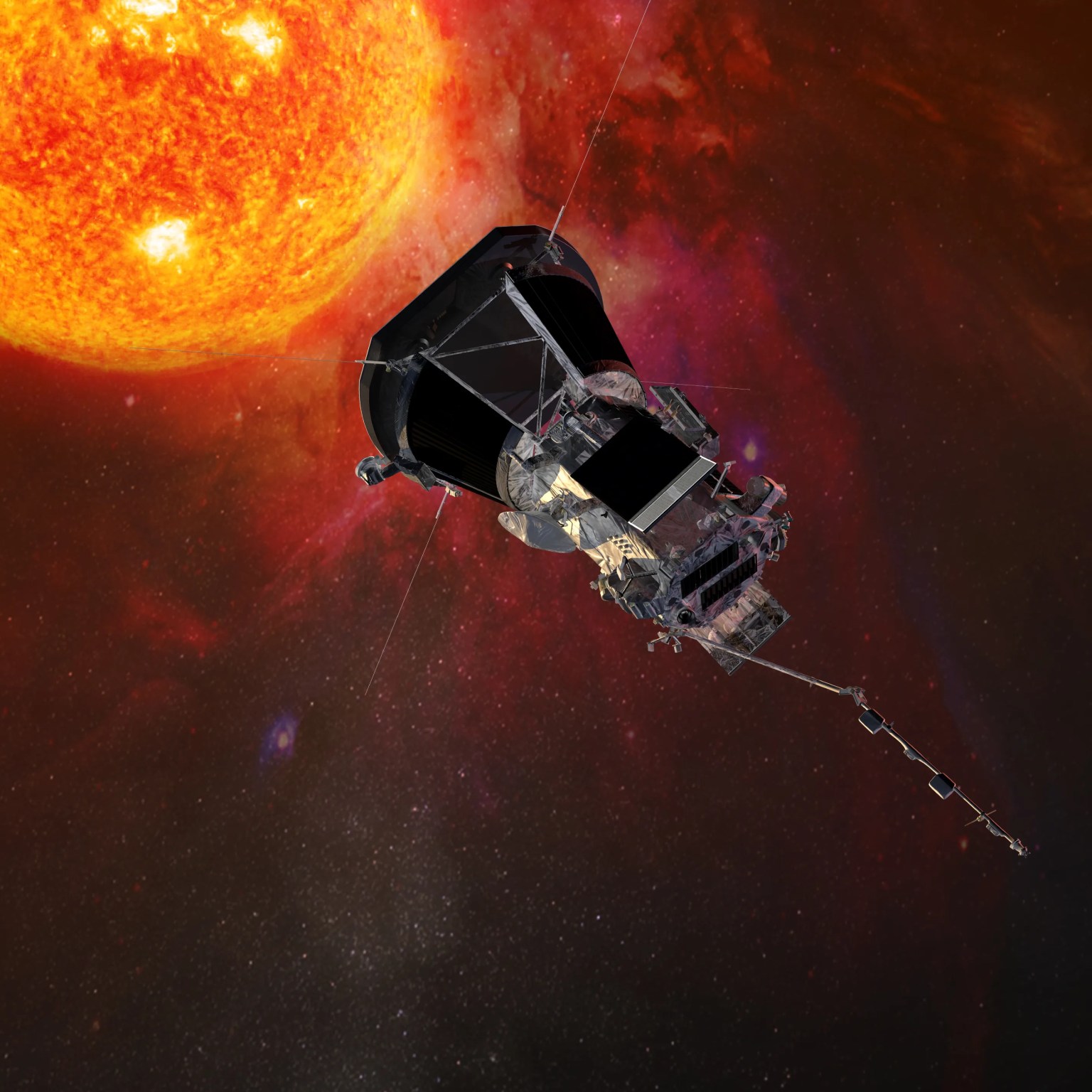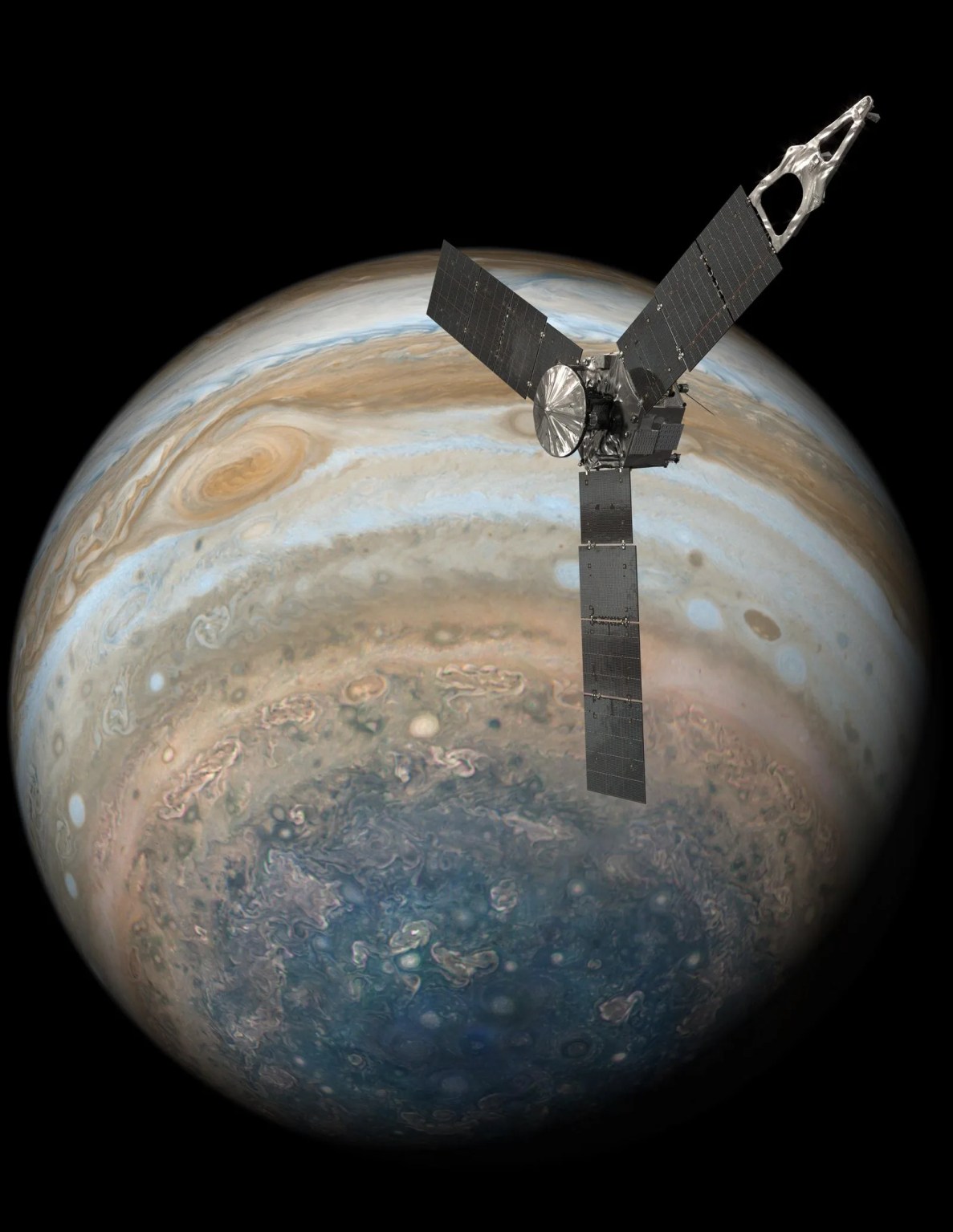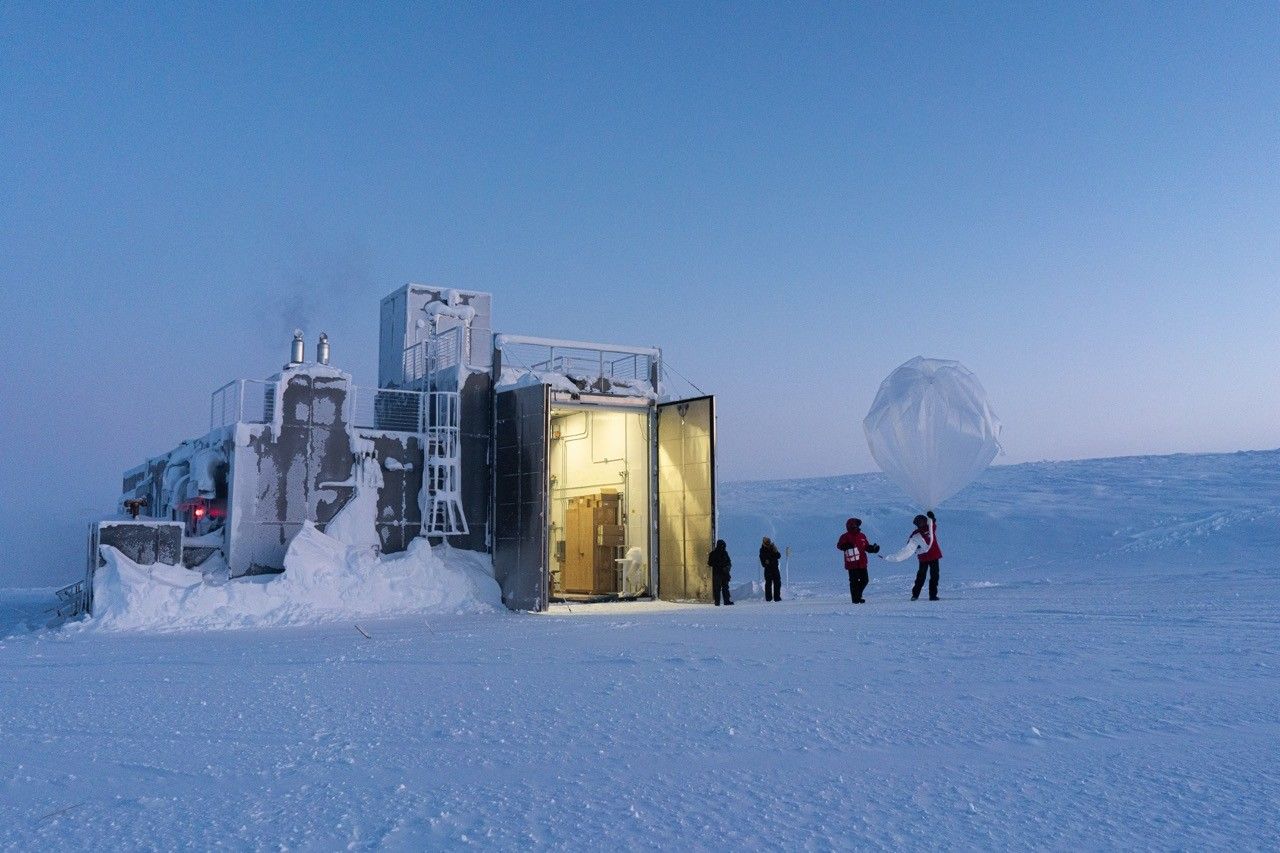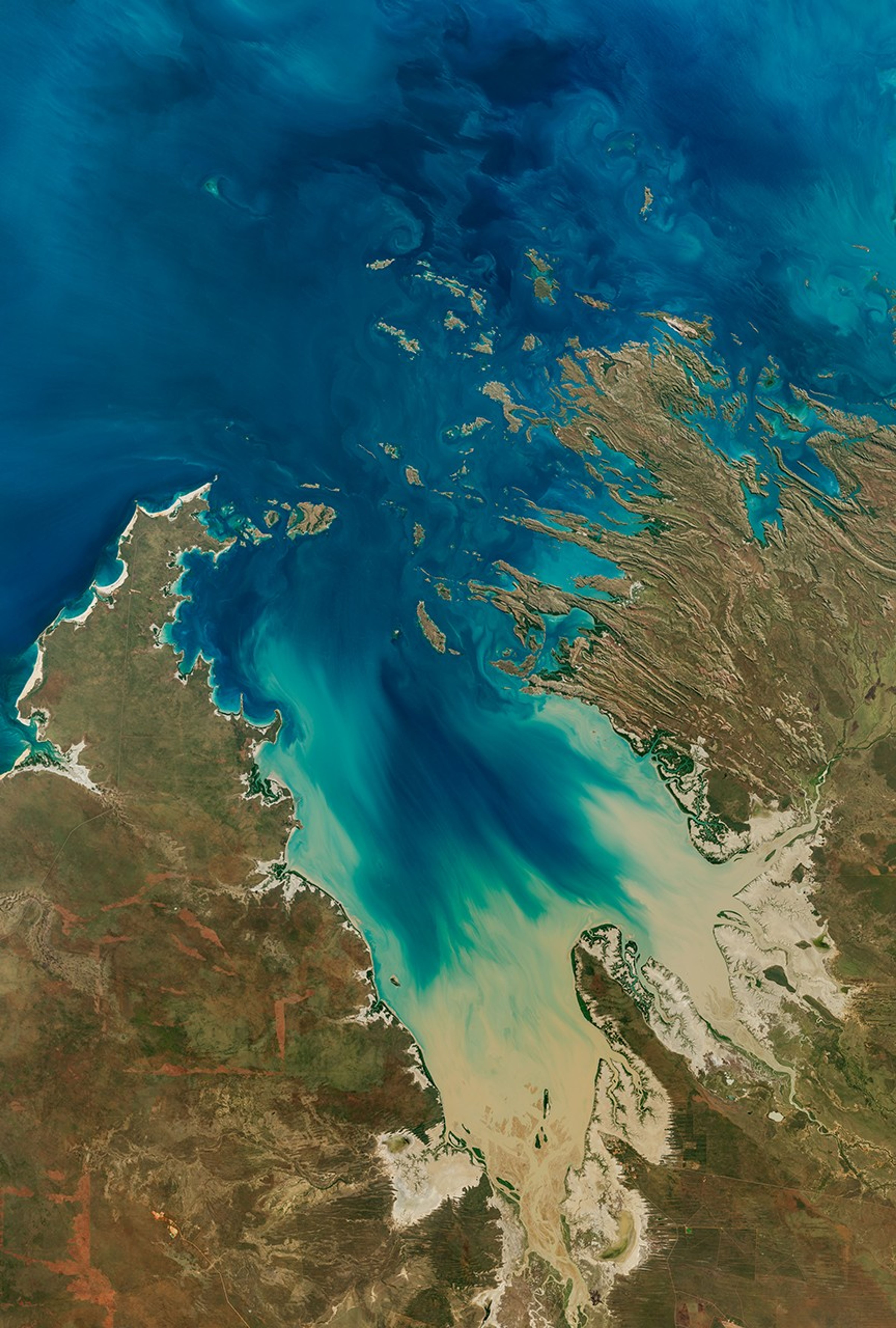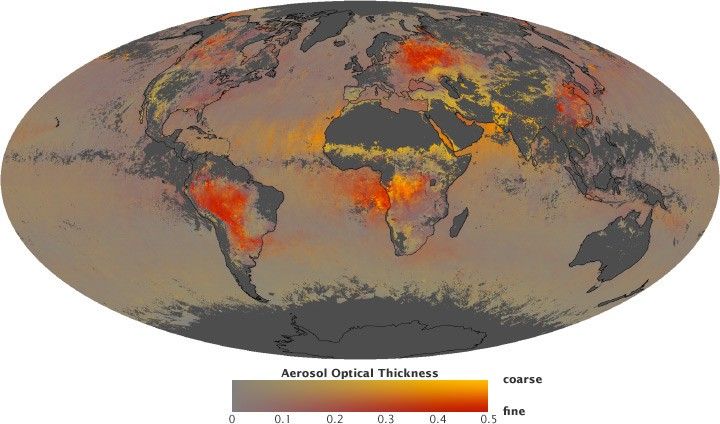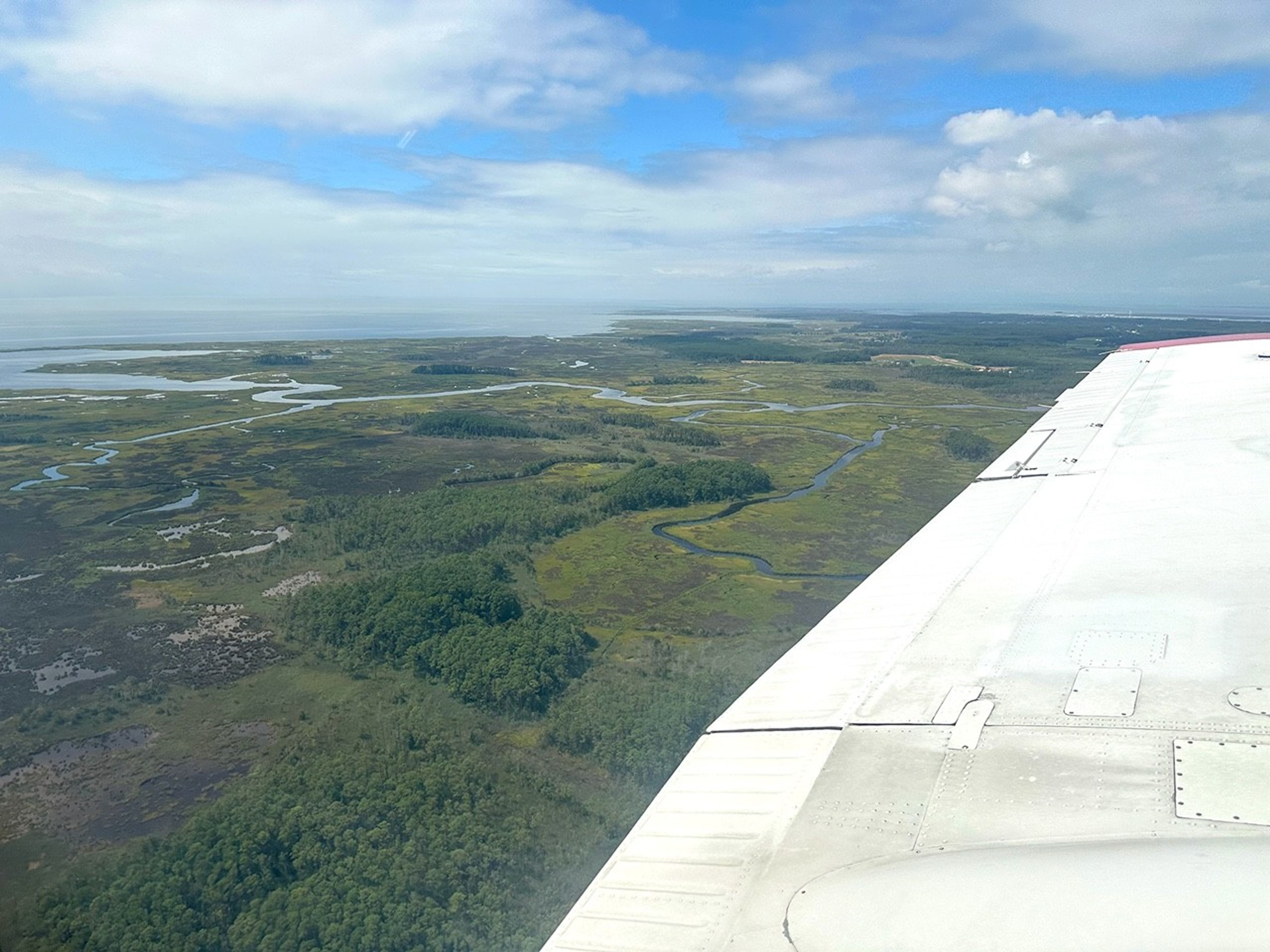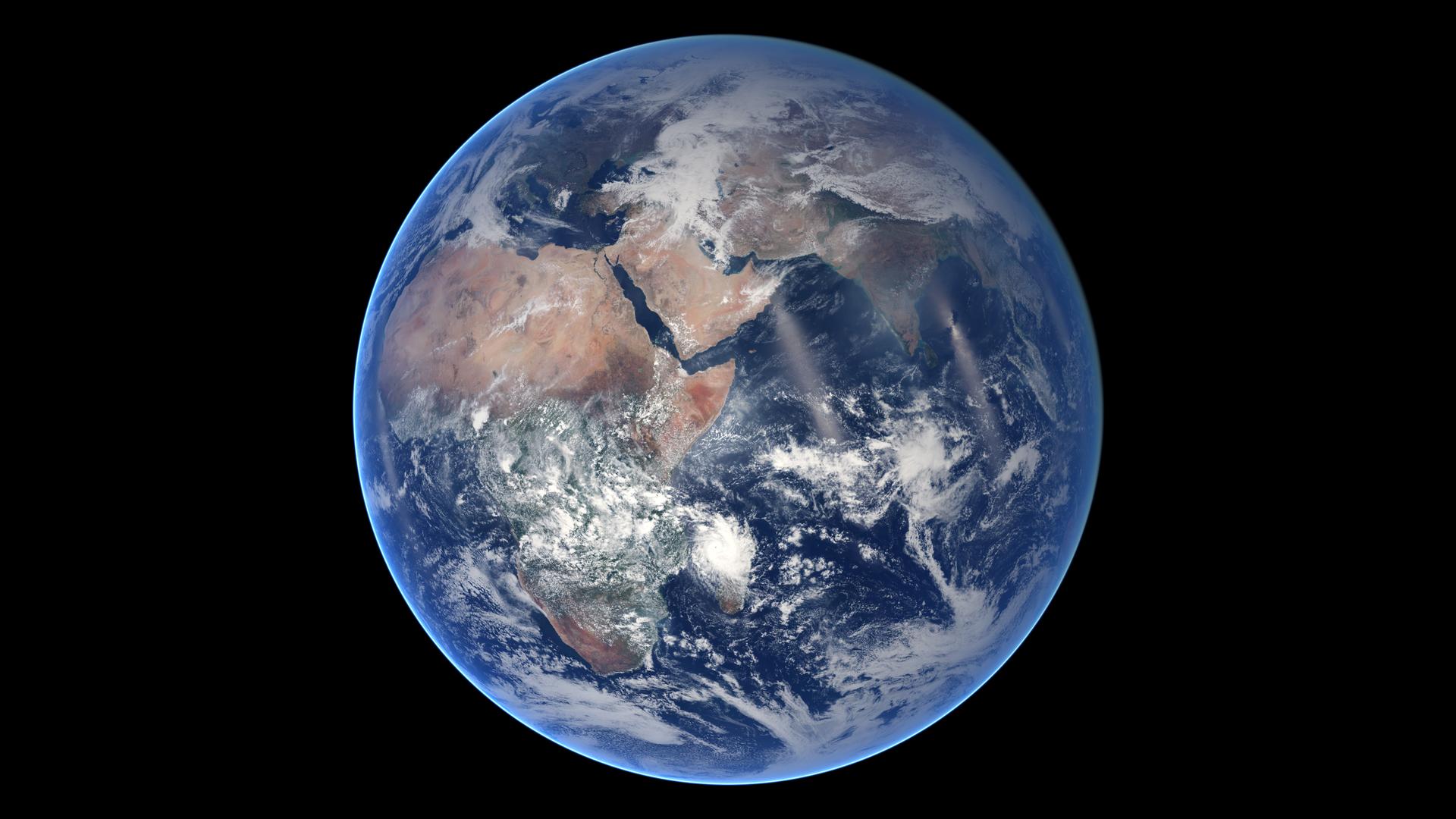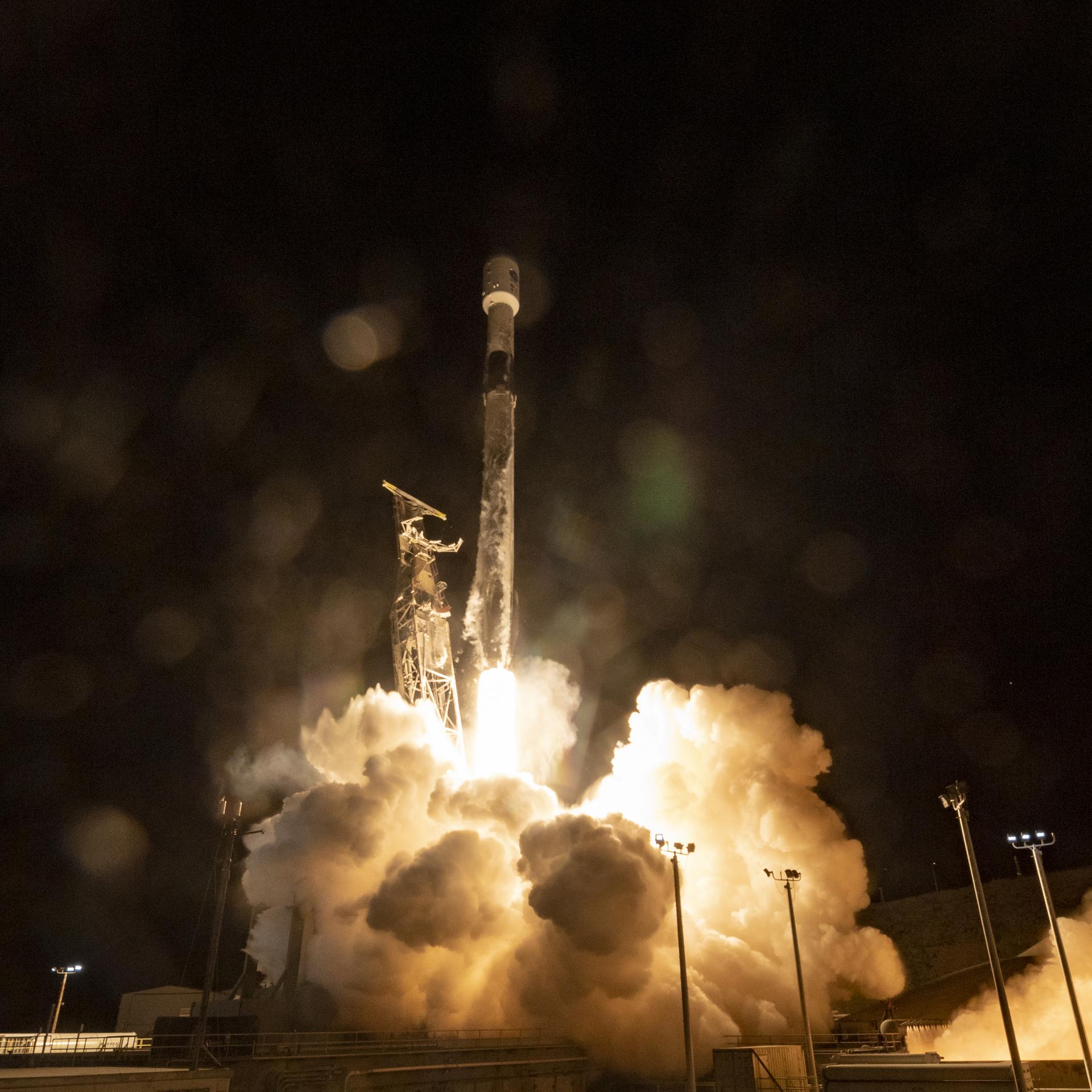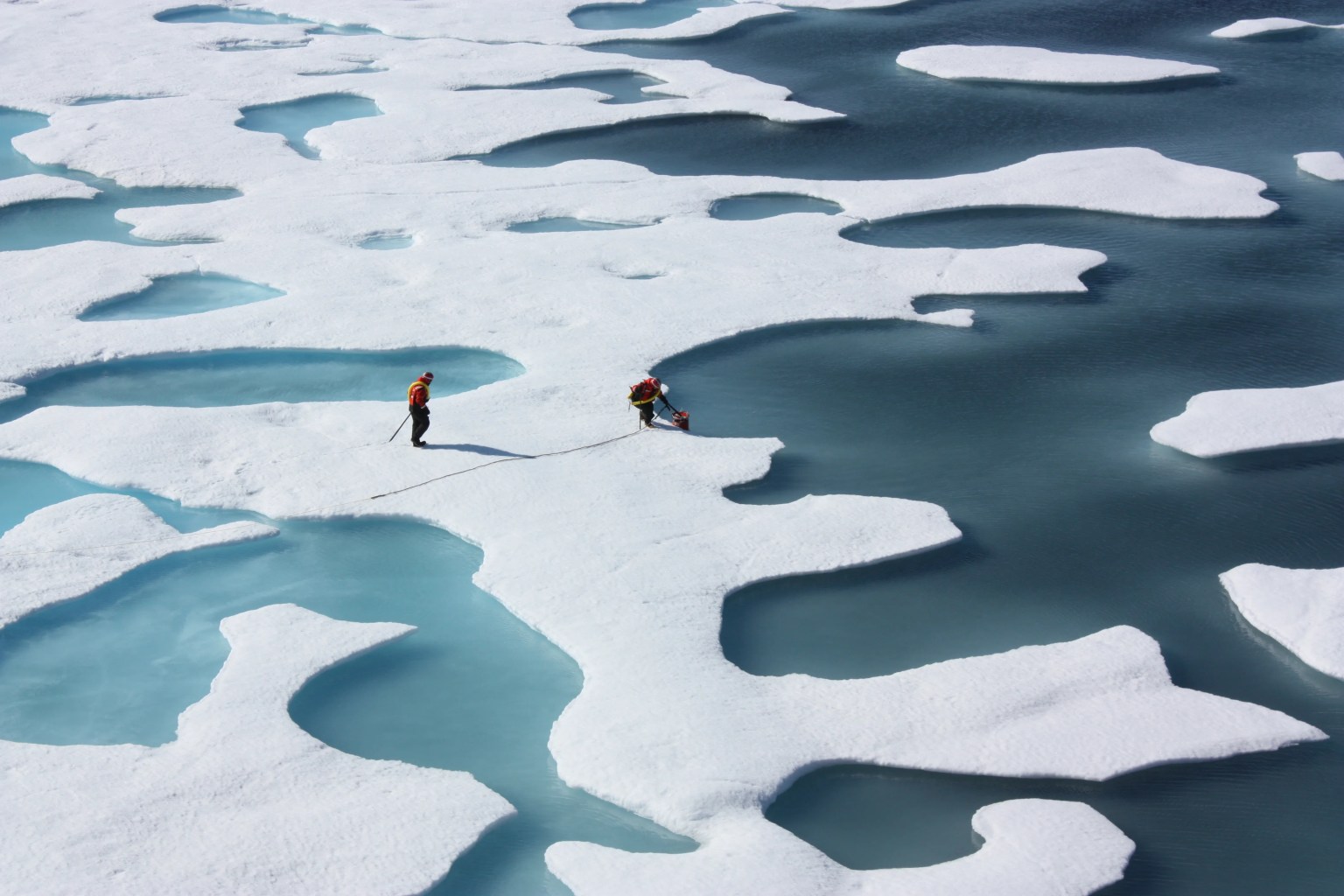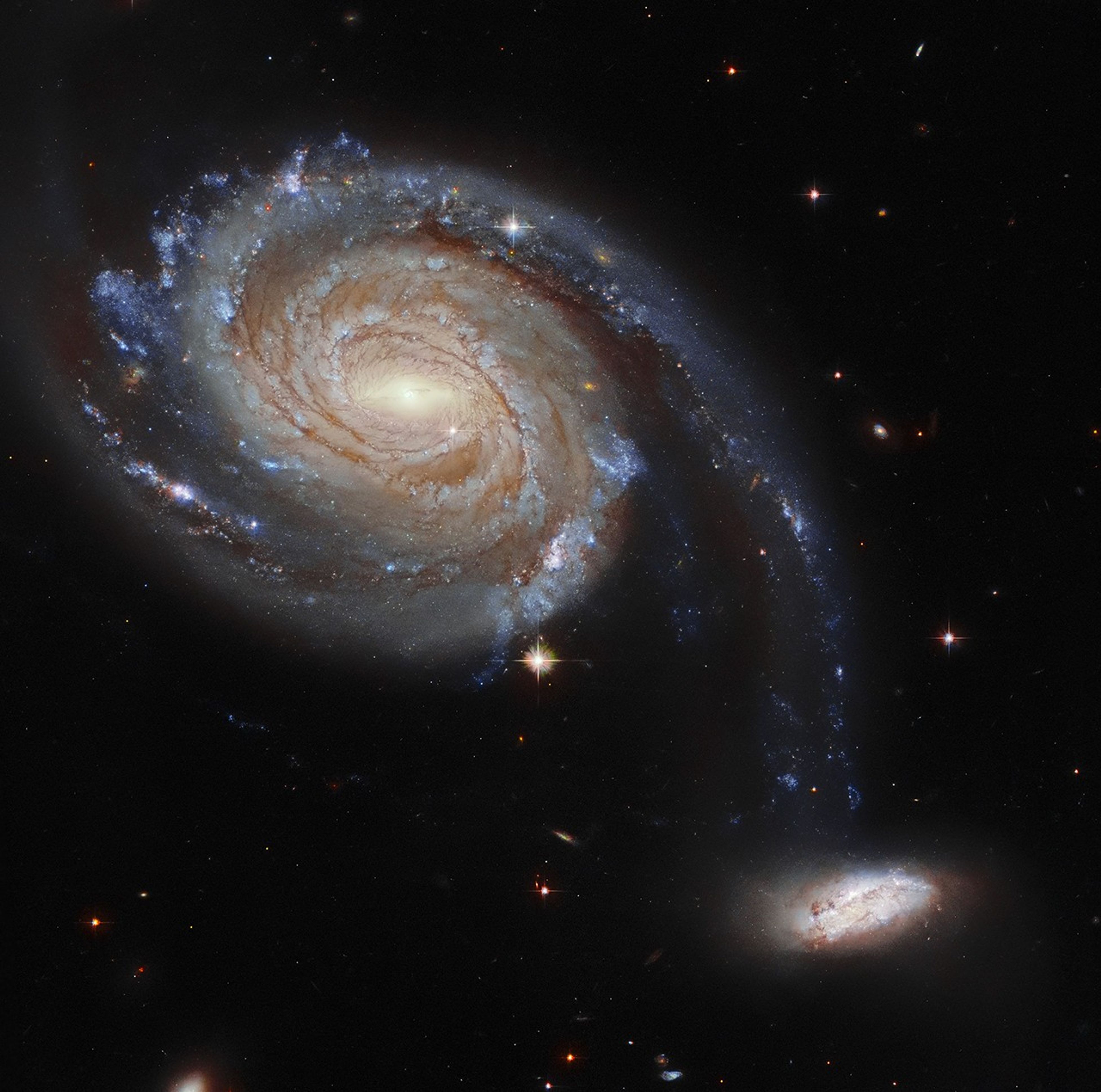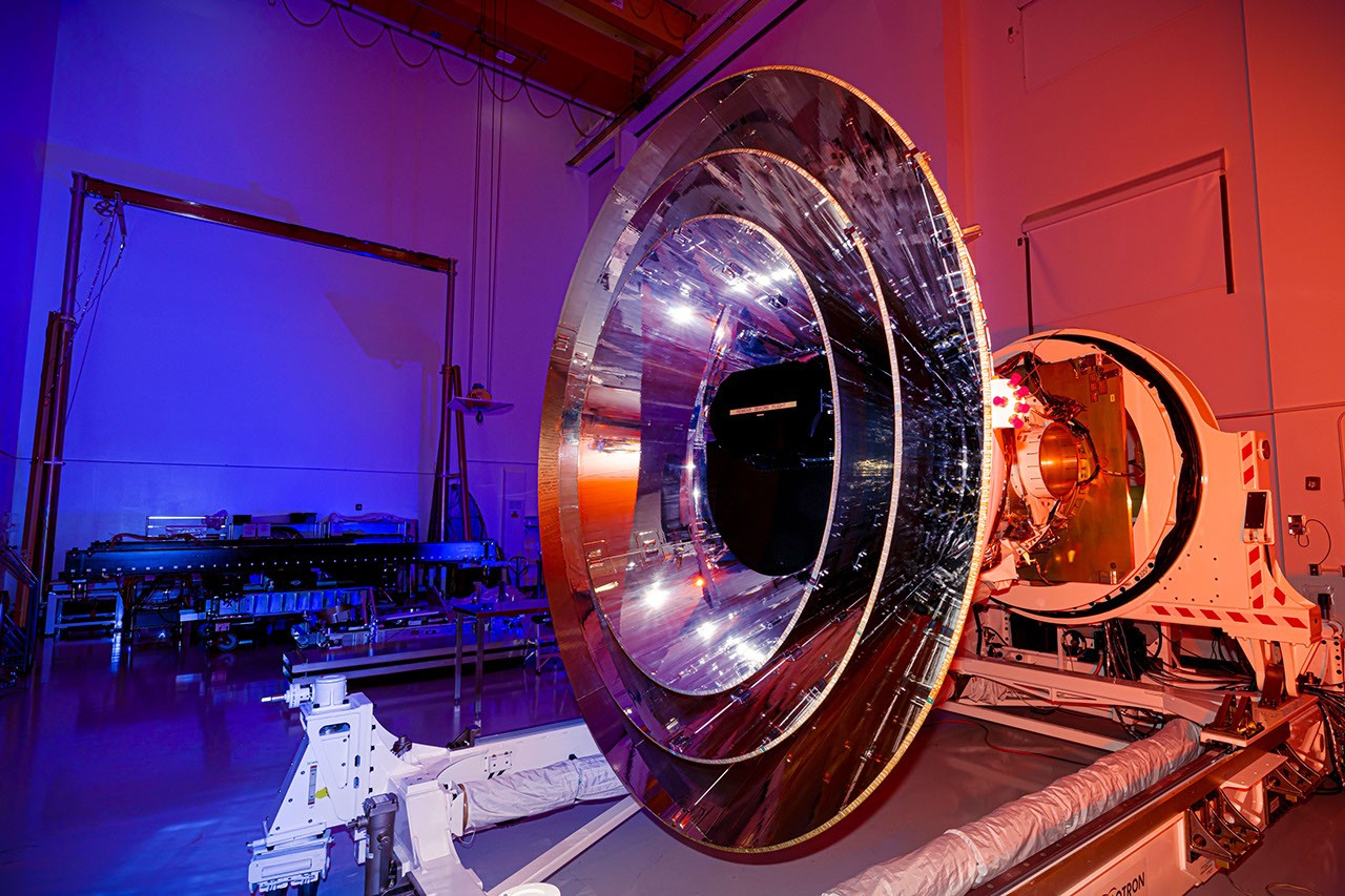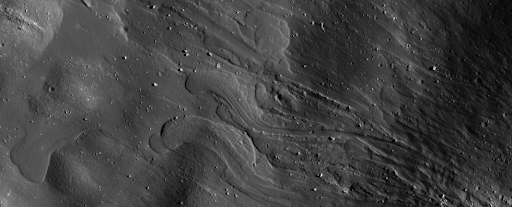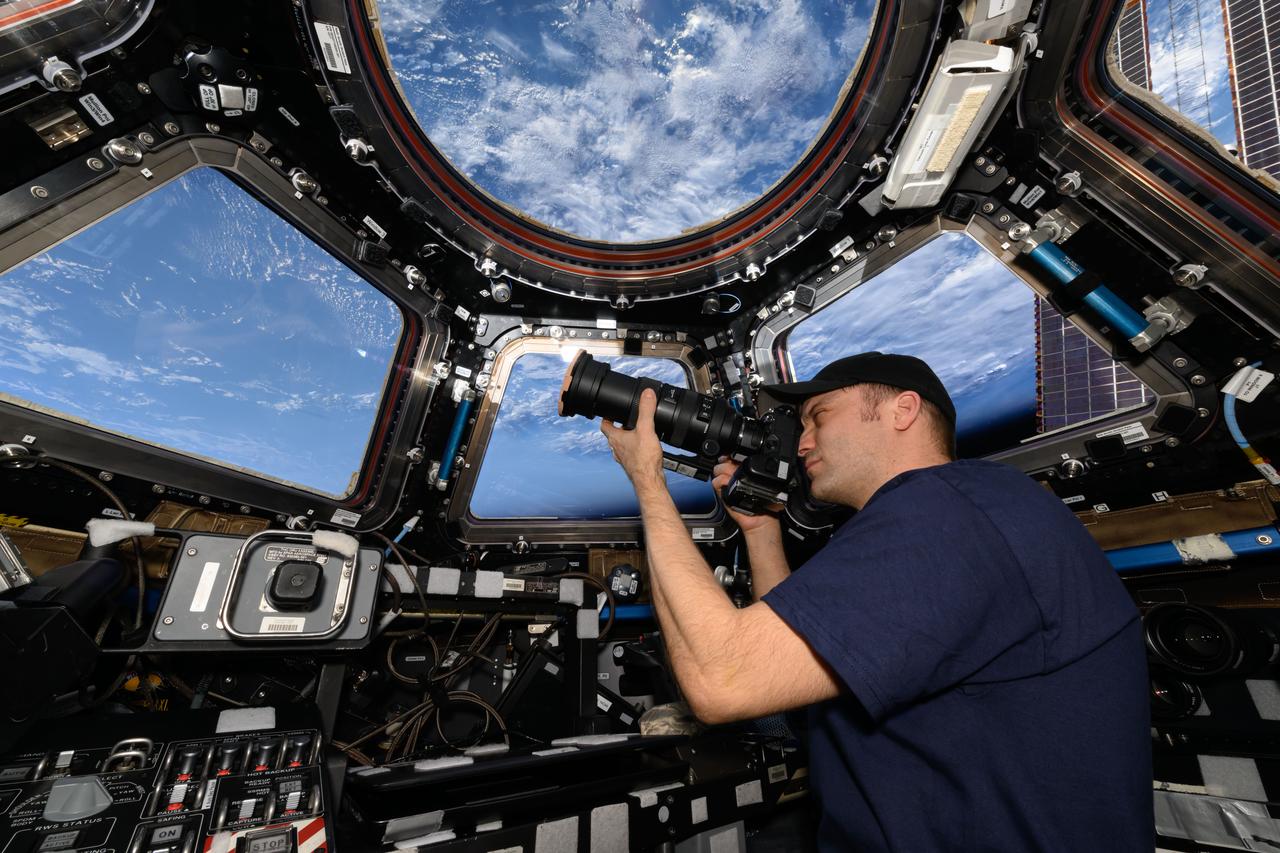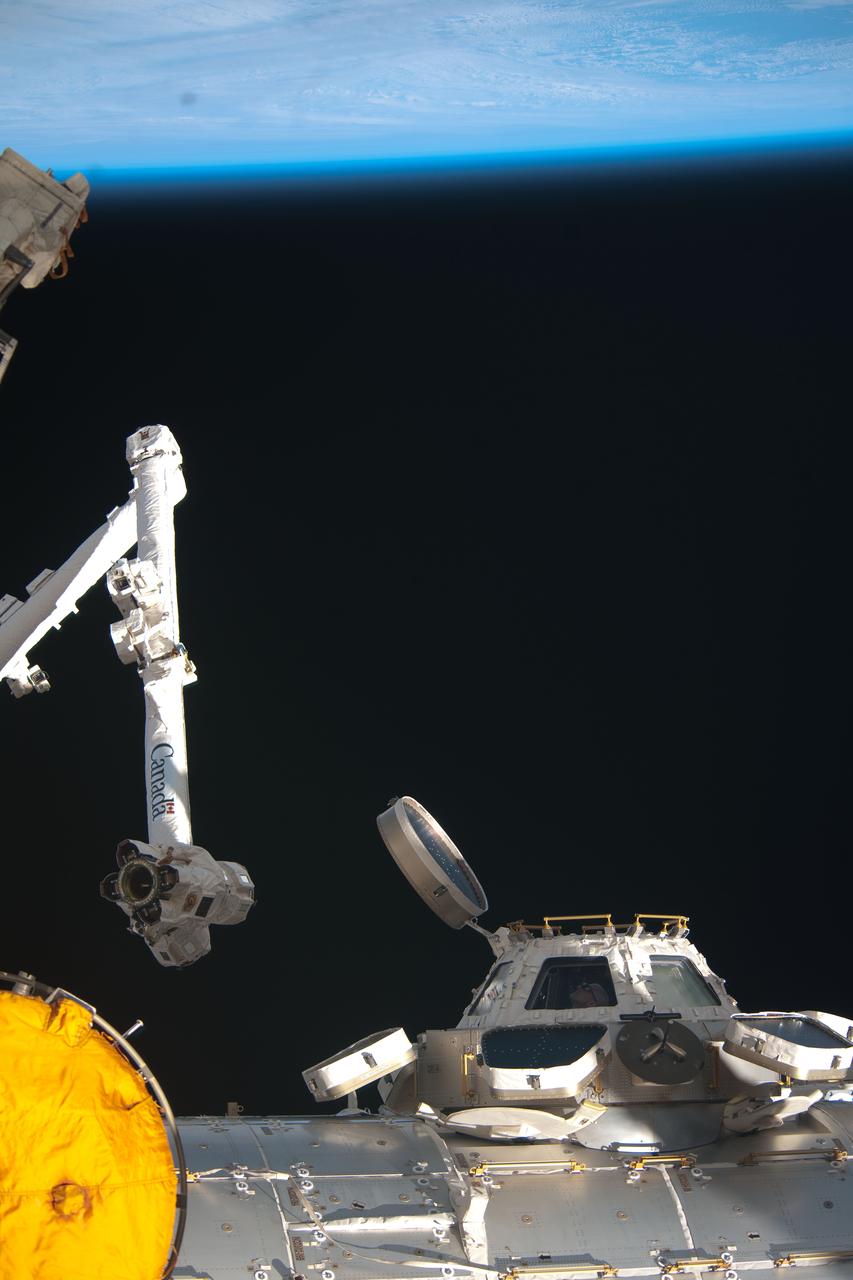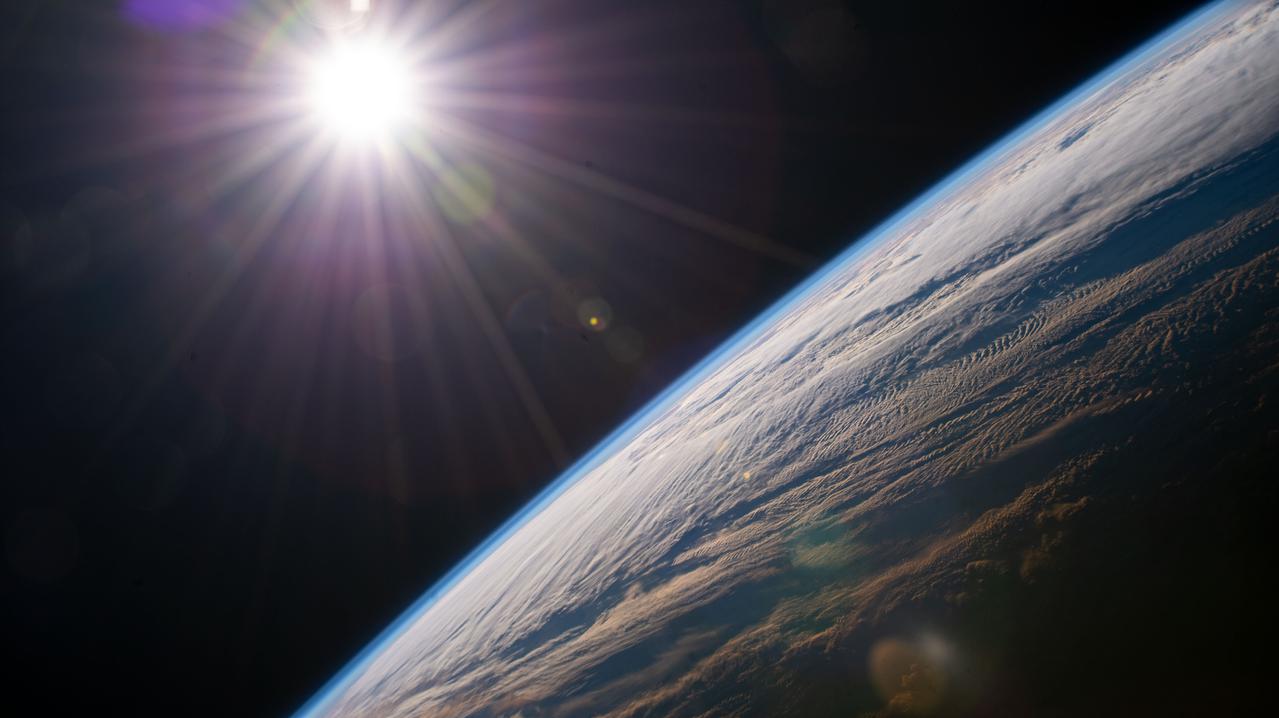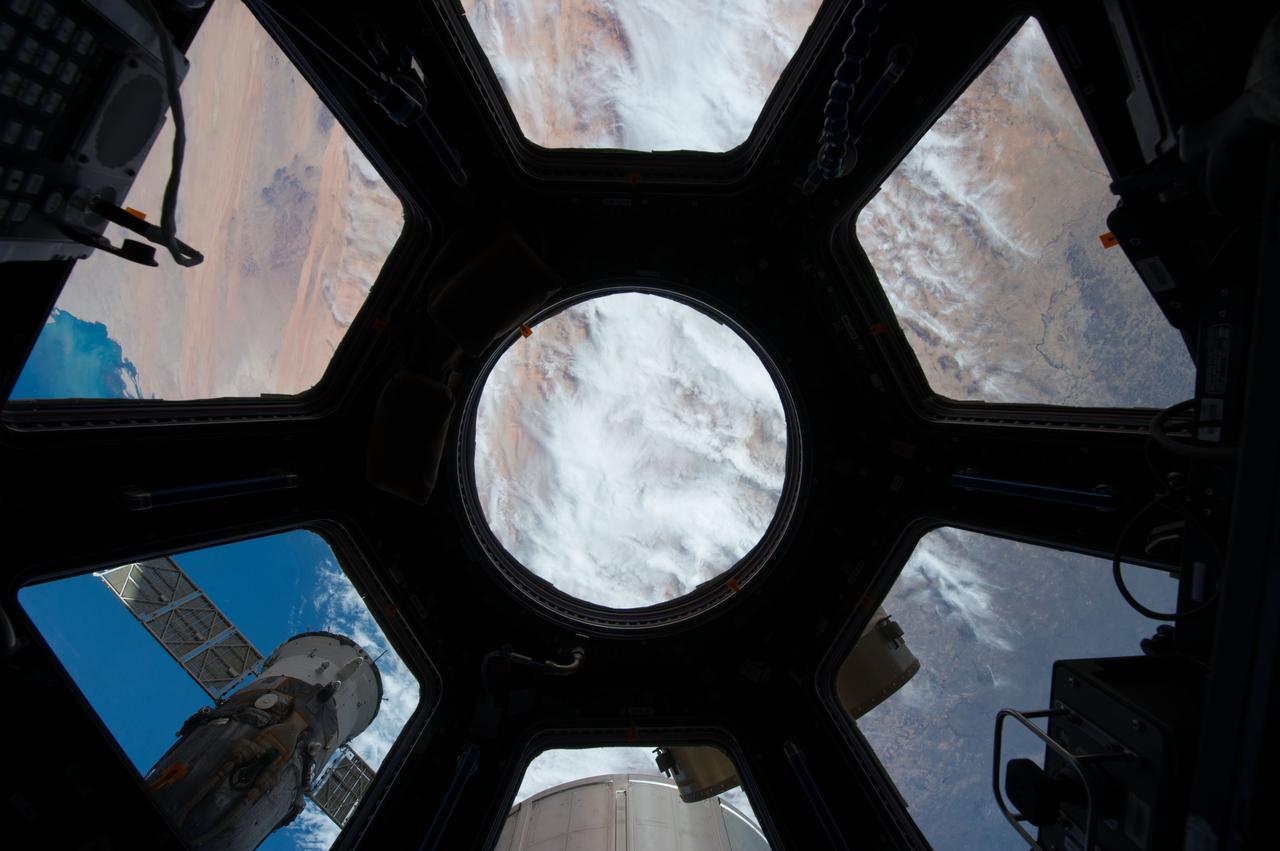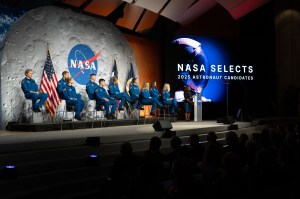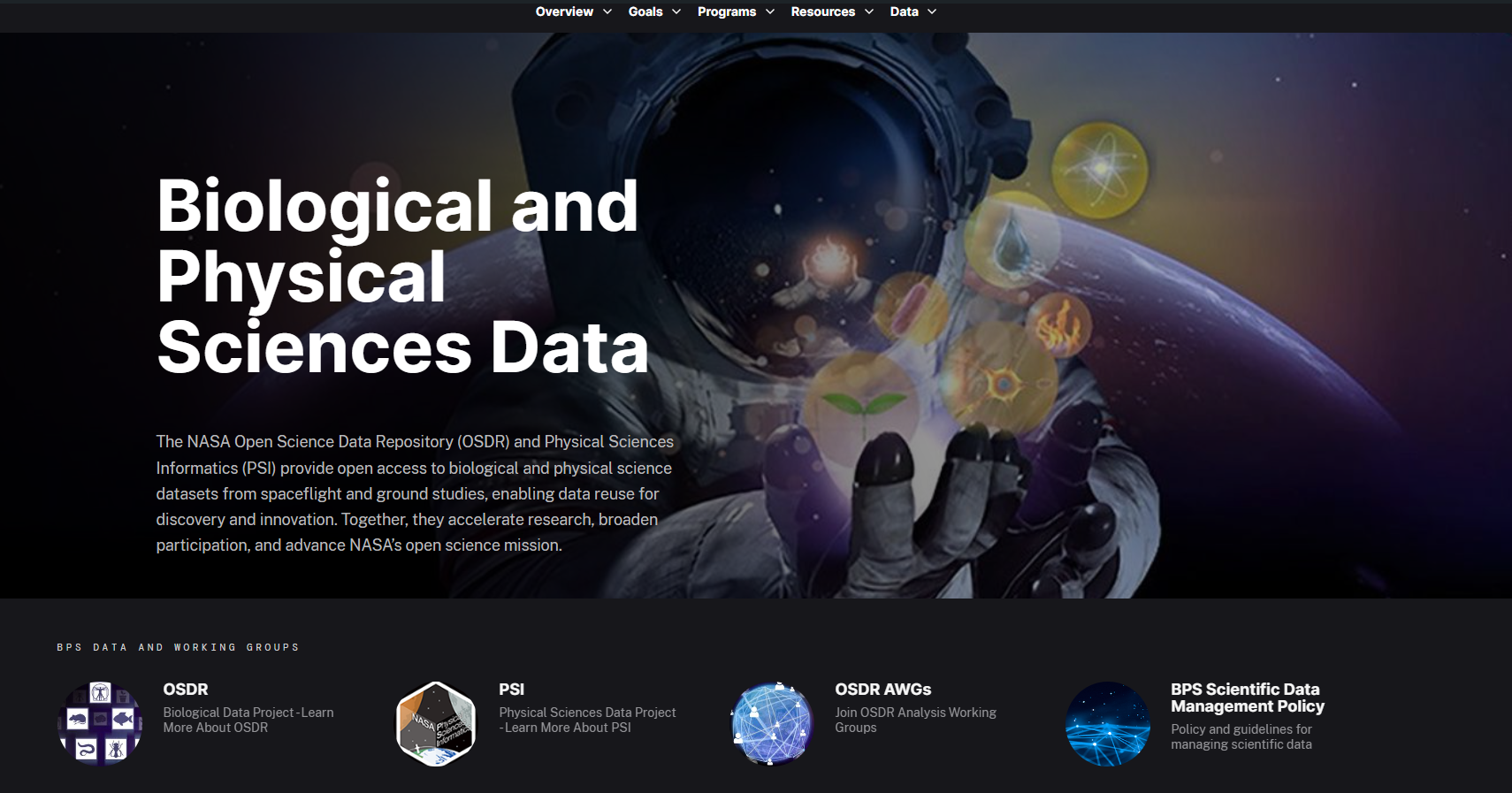NASA’s 2025 Astronaut Candidates: Shaping Artemis Exploration

When NASA’s 2025 astronaut candidates arrived at the agency’s Johnson Space Center in Houston this fall, they stepped into history, sharing a common mission to master the skills and teamwork that define NASA’s next era of exploration.
Selected from a pool of more than 8,000 applicants, the new class represents a range of backgrounds — military test pilots, engineers, a physician, and a scientist — but all were inspired by moments in their lives that set them on a path to space.
They will spend nearly two years in training before becoming eligible for missions to low Earth orbit, the Moon, and eventually, Mars. When they graduate, they will join NASA’s active astronaut corps, advancing science aboard the International Space Station and supporting Artemis missions that will carry human exploration farther than ever before.
During the class announcement at Johnson on Sept. 22, 2025, Center Director Vanessa Wyche celebrated the moment as a milestone for exploration.
“Today is an exciting day for our nation and for all of humanity as we introduce NASA’s 2025 astronaut candidates — the next generation who will help us explore the Moon, Mars, and beyond,” Wyche said. “Each one of these candidates brings unique experiences and perspectives that reflect the diversity of America and the spirit of exploration that defines NASA.”
Behind their new blue flight suits are years of preparation and stories as multifaceted as the missions they will one day support.
Different Roads to the Same Horizon
Some of the candidates built their careers in the air, where precision, communication, and teamwork were part of every mission. Former U.S. Navy pilot and test pilot Rebecca Lawler says that is exactly what drew her to NASA.
“All of these people are coming from different disciplines and levels of expertise, and you’re all working together to get science to fly,” she said. “That’s what excites me most — bringing those experiences together as a team.”
Imelda Muller, an anesthesiologist and former U.S. Navy undersea medical officer, said her experience supporting experimental diving teams taught her how people from different backgrounds can come together under one mission, something she sees echoed at NASA.
Muller remembers looking up at the night sky as a kid, able to see almost every star on a clear night. Her grandfather worked on the Apollo program and used to share stories with her, and she says the mix of stargazing and imagining those missions inspired her dream of becoming an astronaut.
Anna Menon, a biomedical engineer and former flight controller, has seen the human side of spaceflight from the ground and from space. She supported astronaut health aboard the space station from the Mission Control Center in Houston and served as a mission specialist and medical officer aboard SpaceX’s Polaris Dawn mission.
As more people venture into space, we have this incredible opportunity to learn how the human body changes in microgravity. That knowledge will help keep crews healthy as we go farther than ever before.

Anna Menon
Astronaut Candidate
A Houston native, she discovered her passion for exploration in the fourth grade during a field trip to Johnson. “That experience lit a fire in me to want to be part of the space industry,” she said.
The Language of Human Spaceflight
For the test pilots — including Adam Fuhrmann, Cameron Jones, Ben Bailey, and Erin Overcash — flight testing taught adaptability, composure, and the discipline to make quick decisions when it matters most. As Fuhrmann put it, it is about knowing when to lead and when to listen.
In flight test, nothing happens alone. We work with incredible engineers and professionals to plan and execute complex missions. That teamwork translates perfectly to human spaceflight.

Adam Fuhrmann
Astronaut Candidate
Every astronaut candidate will spend nearly two years learning spacecraft systems, practicing spacewalks in the Neutral Buoyancy Laboratory, flying T-38 jets, and studying geology, robotics, and survival training.
As U.S. Army Chief Warrant Officer and helicopter test pilot Ben Bailey said, it is not one skill that matters most — it is the combination.
“Each one is exciting on its own — flying, language training, spacewalks — but getting to do them all together, as a crew, that’s the best part,” Bailey said.
During the event, current astronauts welcomed the new class and shared advice drawn from their own journeys in human spaceflight. “Thankfully, you will have some of the most talented, passionate instructors and an incredibly dedicated team here at NASA,” said NASA astronaut Chris Williams. “Some of the most special moments will come as you find how much you get to learn from each other.”
From the International Space Station, NASA astronaut Zena Cardman encouraged the candidates to “learn everything you can, get to know each other, and enjoy the ride.”
NASA astronaut Jonny Kim followed with a reminder every explorer carries forward: “The people sitting beside you now will become lifelong friends.”
Explorers of the Golden Age
From geologist Lauren Edgar, who worked on the Curiosity Mars Rover and the Artemis III science team, to engineers like Yuri Kubo, who completed seven NASA internships, and Katherine Spies, who designed and tested flight systems that make exploration possible, each brings a layer of expertise to the agency’s future on the Moon and beyond.
I’ve always loved figuring out how things work and finding ways to make them better. That’s what drew me to engineering, and it’s what keeps me excited about exploration.

Yuri Kubo
Astronaut Candidate
A New Era Begins
At the announcement ceremony, NASA Flight Operations Director Norm Knight said, “Every lesson learned aboard station has paved the way for where we’re headed next – to the Moon, this time to stay, and on to Mars. We have a group of individuals who are not only exceptional, but who will be inspirational for the United States of America and for our planet.”
Together, the astronaut candidates reflect the spirit of Artemis — curiosity, courage, and continuous learning as humanity prepares for its next giant leap.
About the Author
Sumer Loggins
Share
Details
Related Terms
3 min read
New NASA HEAT and My NASA Data Resources Bring Space Weather Science into Classrooms
As the Sun enters a period of heightened activity, students now have a new way to explore its powerful effects on Earth and space. NASA’s Heliophysics Education Activation Team (NASA HEAT), in collaboration with My NASA Data, has released a new set of classroom resources that invite students and educators to engage with real NASA mission data to study space weather phenomena in real time.
Hands-On Learning with Real NASA Data
Developed as part of NASA HEAT’s mission to increase awareness and understanding of heliophysics, these new materials help learners connect directly with the science of the Sun and its influence on the solar system. The resources include:
- Lesson plans and mini-lessons for quick classroom engagement
- Interactive web-based tools that let students visualize and analyze real mission data
- StoryMaps, longer-form digital experiences that guide multi-day investigations into space weather events
These activities draw from data collected by NASA’s Parker Solar Probe, the Solar Dynamics Observatory (SDO), and the European Space Agency’s Solar Orbiter, among others, giving students a chance to explore how scientists monitor and study the Sun’s behavior.
Understanding Space Weather
Space weather is driven by the Sun’s activity – its bursts of energy, radiation, and plasma that stream through space. When these events interact with Earth’s magnetic field, they can produce stunning auroras but also cause radio disruptions, satellite interference, and power grid issues.
By engaging with these new resources, students can learn how NASA monitors and predicts these solar phenomena and why studying space weather is essential for keeping astronauts, spacecraft, and technology safe.
Learning During Solar Maximum
This launch comes at a perfect time. In late 2024, the Sun entered solar maximum, the most active part of its 11-year cycle, providing students a front-row seat to increased solar flares, sunspots, and coronal mass ejections. The new NASA HEAT and My NASA Data resources encourage educators to use this unique moment to deepen classroom discussions on magnetism, energy, and the Sun–Earth connection through observation and data-driven exploration.
Inspiring Future Scientists
Both NASA HEAT and My NASA Data, part of GLOBE Mission Earth (Global Learning and Observations to Benefit the Environment), are part of the NASA Science Activation (SciAct) program, which connects learners of all ages with authentic NASA science content, experts, and experiences. By bringing real-world data and current scientific phenomena into the classroom, these new tools empower students to think like scientists and see themselves as contributors to ongoing discovery.
Explore the New Resources
Share
Details
Related Terms
5 min read
NASA, NOAA Rank 2025 Ozone Hole as 5th Smallest Since 1992
While continental in scale, the ozone hole over the Antarctic was small in 2025 compared to previous years and remains on track to recover later this century, NASA and the National Oceanic and Atmospheric Administration (NOAA) reported. The hole this year was the fifth smallest since 1992, the year a landmark international agreement to phase out ozone-depleting chemicals began to take effect.
At the height of this year’s depletion season from Sept. 7 through Oct. 13, the average extent of the ozone hole was about 7.23 million square miles (18.71 million square kilometers) — that’s twice the area of the contiguous United States. The 2025 ozone hole is already breaking up, nearly three weeks earlier than usual during the past decade.

The hole reached its greatest one-day extent for the year on Sept. 9 at 8.83 million square miles (22.86 million square kilometers). It was about 30% smaller than the largest hole ever observed, which occurred in 2006, and had an average area of 10.27 million square miles (26.60 million square kilometers).
“As predicted, we’re seeing ozone holes trending smaller in area than they were in the early 2000s,” said Paul Newman, a senior scientist with the University of Maryland, Baltimore County, and leader of the ozone research team at NASA’s Goddard Space Flight Center in Greenbelt, Maryland. “They’re forming later in the season and breaking up earlier. But we still have a long way to go before it recovers to 1980s levels.”
NASA and NOAA scientists say this year’s monitoring showed that controls on ozone-depleting chemical compounds established by the Montreal Protocol and subsequent amendments are driving the gradual recovery of the ozone layer in the stratosphere, which remains on track to recover fully later this century.
The ozone-rich layer acts as a planetary sunscreen that helps shield life from harmful ultraviolet (UV) radiation from the Sun. It is located in the stratosphere, which is found between 7 and 31 miles above the Earth’s surface. Reduced ozone allows more UV rays to reach the surface, resulting in crop damage as well as increased cases of skin cancer and cataracts, among other adverse health impacts.
The ozone depletion process starts when human-made compounds containing chlorine and bromine rise high into the stratosphere miles above Earth’s surface. Freed from their molecular bonds by the more intense UV radiation, the chlorine and bromine-containing molecules then participate in reactions that destroy ozone molecules. Chlorofluorocarbons and other ozone-depleting compounds were once widely used in aerosol sprays, foams, air conditioners, and refrigerators. The chlorine and bromine from these compounds can linger in the atmosphere for decades to centuries.
“Since peaking around the year 2000, levels of ozone-depleting substances in the Antarctic stratosphere have declined by about a third, relative to pre-ozone-hole levels,” said Stephen Montzka, a senior scientist with NOAA’s Global Monitoring Laboratory.
As part of the 1987 Montreal Protocol, countries agreed to replace ozone-depleting substances with less harmful alternatives.
“This year’s hole would have been more than one million square miles larger if there was still as much chlorine in the stratosphere as there was 25 years ago,” Newman said.
Still, the now-banned chemicals persist in old products like building insulation and in landfills. As emissions from those legacy uses taper off over time, projections show the ozone hole over the Antarctic recovering around the late 2060s.
NASA and NOAA previously ranked ozone hole severity using a time frame dating back to 1979, when scientists began tracking Antarctic ozone levels with satellites. Using that longer record, this year’s hole area ranked 14th smallest over 46 years of observations.
Factors like temperature, weather, and the strength of the wind encircling Antarctica known as the polar vortex also influence ozone levels from year to year. A weaker-than-normal polar vortex this August helped keep temperatures above average and likely contributed to a smaller ozone hole, said Laura Ciasto, a meteorologist with NOAA’s Climate Prediction Center.
Researchers monitor the ozone layer around the world using instruments on NASA’s Aura satellite, the NOAA-20 and NOAA-21 satellites, and the Suomi National Polar-orbiting Partnership satellite, jointly operated by NASA and NOAA.
NOAA scientists also use instruments carried on weather balloons and upward-looking surface-based instruments to measure stratospheric ozone directly above the South Pole Atmospheric Baseline Observatory. Balloon data showed that the ozone concentration reached its lowest value of 147 Dobson Units this year on Oct. 6. The lowest value ever recorded over the South Pole was 92 Dobson Units in October 2006.
The Dobson Unit is a measurement that indicates the total number of ozone molecules present throughout the atmosphere above a certain location. A measurement of 100 Dobson Units corresponds to a layer of pure ozone 1 millimeter thick — about as thick as a dime — at standard temperature and pressure conditions.
View the latest status of the ozone layer over the Antarctic with NASA’s ozone watch.
By Sally Younger
NASA’s Earth Science News Team
News Media Contacts:
Elizabeth Vlock
NASA Headquarters, Washington
202-358-1600
[email protected]
Peter Jacobs
NASA’s Goddard Space Flight Center, Greenbelt, Md.
301-286-3308
[email protected]
Theo Stein
NOAA Communications
303-819-7409
[email protected]
About the Author
Sally Younger
Share
Details
Related Terms
2 min read
NASA Citizen Science Toolkit for Librarians
Librarians: NASA Citizen Science has something for you!
Our new Toolkit for Librarians can help you share NASA citizen science opportunities with your patrons and community members. Rural and urban libraries, informal educators, youth group leaders, and retirement community coordinators can all benefit from this resource. Together, we can open the door for more people to join the fun, learning, and thrill of doing NASA science.
The toolkit prepares a program leader to lead a NASA Science event for people ages 8 and up. The toolkit includes:
- A guide to help you prepare for the event, from choosing and equipping the space, to becoming familiar with the citizen science project that will be the focus of the event
- An editable 8.5” by 11” poster to advertise your event
- A model agenda to follow during your event
- A handout for you and your participants to help you explore NASA-sponsored citizen science project opportunities
The toolkit creators, Sarah Kirn (Participatory Science Strategist, NASA, from the Gulf of Maine Research Institute) and Kara Reiman (librarian), together with NASA’s Citizen Science Officer Marc Kuchner, also recorded a video walk-through of this Toolkit.
“I appreciate this so much!” said one participant. “I have started Citizen Science Kits for circulation over this past year and am excited to share new opportunities with our patrons!”
“Living in a very rural and primarily native community, the kids here are limited with their nearby opportunities, so sharing this with them is a huge win…” said another.
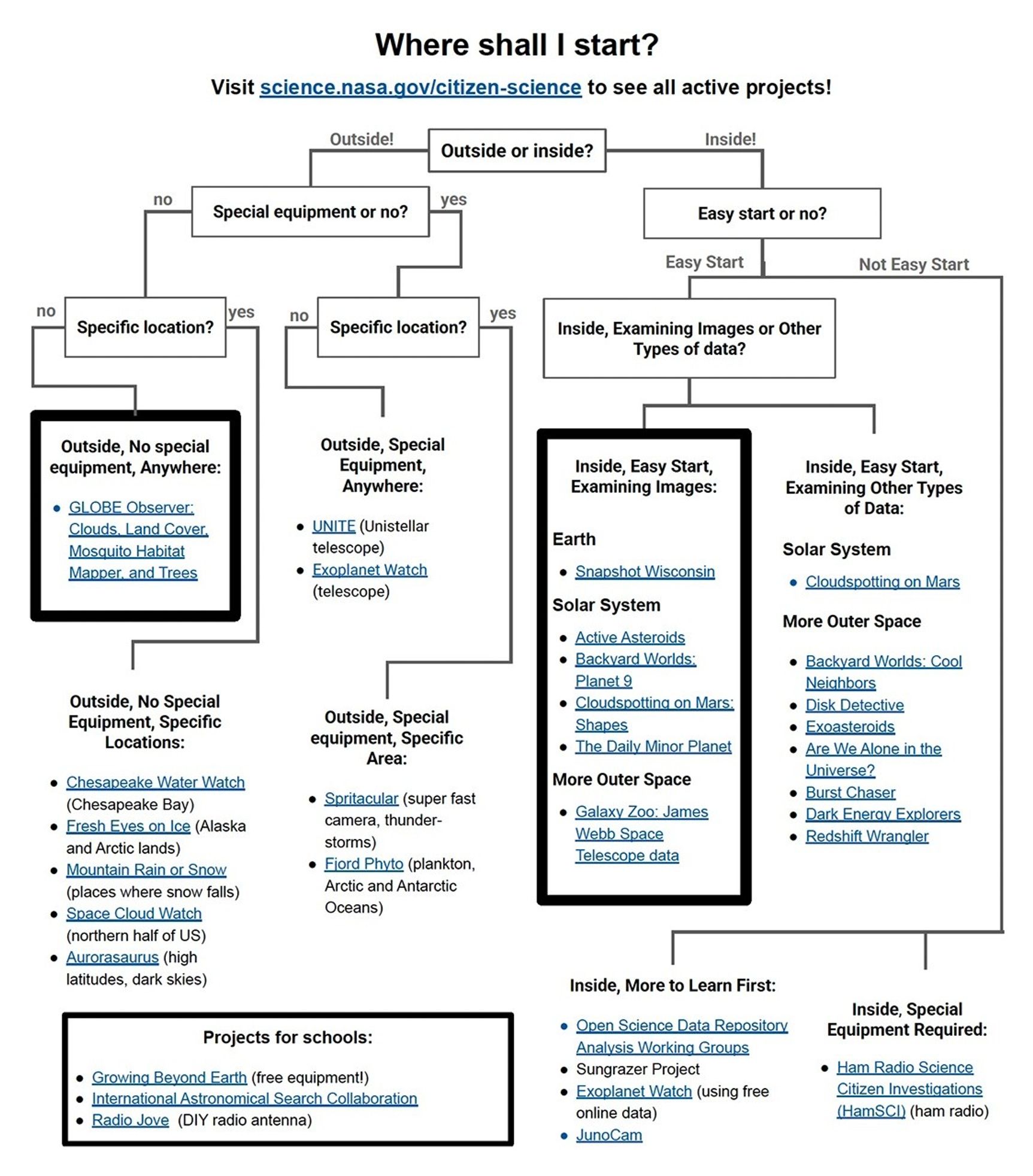
Learn More and Get Involved

Please share this toolkit – or use it yourself – to invite more people to do NASA science with us – who knows what they will discover?!
Share
Details
Related Terms
JAXA (Japan Aerospace Exploration Agency) astronaut Kimiya Yui captured this photo of southern Europe and the northwestern Mediterranean coast from the International Space Station as it orbited 261 miles above Earth on Aug. 30, 2025. At left, the Po Valley urban corridor in Italy shines with the metropolitan areas of Milan and Turin and their surrounding suburbs.
Crew members aboard the orbital lab have produced hundreds of thousands of images of the land, oceans, and atmosphere of Earth, and even of the Moon through Crew Earth Observations. Their photographs of Earth record how the planet changes over time due to human activity and natural events. This allows scientists to monitor disasters and direct response on the ground and study a number of phenomena, from the movement of glaciers to urban wildlife.
Image credit: JAXA/Kimiya Yui
]]>To see Earth from space is to be forever changed by the view. Since Alan Shepard became the first American to lay eyes on our home planet from above, countless NASA astronauts have described feeling awed by the astonishing sight and a profound shift in perspective that followed.
This unique experience is known as the overview effect – a term coined in 1987 by space philosopher and author Frank White in a book of the same name. The phenomenon creates powerful changes in the way astronauts think about Earth and life and can be particularly strong for those who lived and worked aboard the International Space Station during its 25 years of continuous human presence. The orbiting laboratory’s cupola module, equipped with seven windows looking down on Earth, provides the perfect place for observation and reflection.
As Artemis II Mission Specialist Christina Koch explained:
-
“The overview effect is when you’re looking through the cupola and you see the Earth as it exists with the whole universe in the background. You see the thin blue line of the atmosphere, and then when you’re on the dark side of the Earth, you actually see this very thin green line that shows you where the atmosphere is. What you realize is every single person that you know is sustained and inside of that green line and everything else outside of it is completely inhospitable. You don’t see borders, you don’t see religious lines, you don’t see political boundaries. All you see is Earth and you see that we are way more alike than we are different.”
Koch’s Artemis II crewmate, NASA astronaut Victor Glover, said the overview effect’s potency is closely tied to the “sea level effect” – humanity’s shared experience on Earth. “You come back to sea level, and then you have a choice,” he explained. “Are you going to try to live your life a little differently? Are you going to really choose to be a member of this community of Earth?”
Many astronauts emphasize the importance of unity after experiencing the overview effect. “You see that it’s a single planet with a shared atmosphere. It’s our shared place in this universe,” said former NASA astronaut Bob Behnken. “I think that perspective, as we go through things like the pandemic or we see the challenges across our nation or across the world, we recognize that we all face them together.”
Seeing the Earth from space can also change their concept of home. Former NASA astronaut Nicole Stott recalls wanting to see her home state of Florida during her first mission to the International Space Station. “Finally, we were flying over Florida. I wanted to go to the window and see it, and then realized somewhere down the line that I wasn’t looking at Florida that same way anymore,” she said. “I still wanted to see Florida, but Florida had just become this special part of home, which is Earth. We’re all earthlings.”
For some astronauts, their perspective shift inspired them to make changes on the ground. “I think if you’re not a conservationist before you go to space, you’re at least partly a conservationist when you come back. Because when you see how thin that atmosphere is, that protective layer that we have here, you think, wow, we really have to take care of this because it does look so fragile from space,” said retired NASA astronaut Mike Foreman.
Others hope to share the overview effect with more people. “That perspective helps you grow. It has really inspired me to try to get more people this experience and to get a permanent foothold in the stars for our species,” said former NASA astronaut Jack Fischer. “I want to do everything I possibly can to help the human species, humanity as a whole, go further and grow and evolve like I know they’re capable of.”
Future crews to the orbiting laboratory can look forward to a similar experience. “In that instant, when you’re overwhelmed with that vista, when your eyes see nothing but the beauty of the Earth – every single crew member that I brought in [the cupola] for that exposure, cried,” said retired NASA astronaut T.J. Creamer. “It is heart stopping. It is soul pounding. It is breathtaking.”
For more astronaut perspectives from the International Space Station, watch “Down to Earth” on NASA+.
]]>NASA has selected Plug Power, Inc., of Slingerlands, New York, and Air Products and Chemicals, Inc., of Allentown, Pennsylvania, to supply up to approximately 36,952,000 pounds of liquid hydrogen for use at facilities across the agency.
The NASA Agency-wide Supply of Liquid Hydrogen awards are firm-fixed-price requirements contracts that include multiple firm-fixed-price delivery orders critical for the agency’s centers as they use liquid hydrogen, combined with liquid oxygen, as fuel in cryogenic rocket engines, and the commodity’s unique properties support the development of aeronautics. The total value for the combined awards is about $147.2 million.
The contracts begin Monday, Dec. 1, and each consists of a two-year base period followed by three one-year option periods that, if exercised, would extend the contracts to Nov. 30, 2030.
Air Products and Chemicals Inc. will supply up to about 36.5 million pounds of liquid hydrogen to NASA’s Kennedy Space Center and Cape Canaveral Space Force Station in Florida; NASA’s Marshall Space Flight Center in Huntsville, Alabama; and NASA’s Stennis Space Center in Bay St. Louis, Mississippi, for a maximum contract value of approximately $144.4 million.
Plug Power, Inc. will deliver up to approximately 480,000 pounds of the commodity to NASA’s Glenn Research Center in Cleveland, Ohio, and at Neil A. Armstrong Test Facility in Sandusky, Ohio, for a maximum contract value of about $2.8 million.
For additional information about NASA and agency programs, visit:
-end-
Tiernan Doyle
Headquarters, Washington
[email protected]
202-358-1600
Amanda Griffin
Kennedy Space Center, Fla.
[email protected]
321-593-6244
3 min read
10 Years of Students Helping NASA Grow Space Food with Growing Beyond Earth
Nearly 1,250 middle and high school students from 71 schools around the world joined Fairchild Tropical Botanic Garden for the Growing Beyond Earth (GBE) Student Launch Chat with the Scientists, marking an inspiring milestone in the program’s 10th anniversary year.
The live session, held in collaboration with NASA, connected classrooms directly with Dr. Gioia Massa and Trent M. Smith, senior leaders of NASA Kennedy Space Center’s Space Crop Production team. Students heard firsthand how their classroom experiments are helping NASA identify and grow the best crops for future astronauts on long-duration missions to the Moon and Mars.
“Our students are contributing to real NASA science,” said one participating teacher. “It’s incredibly motivating for them to know their data could influence what astronauts eat in space someday.”
Connecting Classrooms with NASA Science
Growing Beyond Earth, led by Fairchild Tropical Botanic Garden in Miami, Florida, brings authentic NASA research into classrooms in a way that few science programs can. For more than a decade, the 83-acre botanic garden – renowned for its conservation, education, and research programs – has worked hand-in-hand with NASA to advance understanding of food production in space.
Students use specially designed plant growth chambers to test how different crops perform under conditions that mimic spacecraft environments. The data they collect are shared with NASA scientists, who use the findings to refine ongoing space crop production research.
Since the program’s inception, more than 120,000 students across 800+ classrooms have tested over 250 plant cultivars, with five student-tested crops already grown aboard the International Space Station.
Cultivating the Future STEM (Science, Technology, Engineering, & Mathematics) Workforce
The Growing Beyond Earth project exemplifies the mission of NASA’s Science Activation (SciAct) program, which connects NASA Science with people of all ages and backgrounds in ways that activate minds and promote a deeper understanding of our world and beyond, with the ultimate Vision: To increase learners’ active participation in the advancement of human knowledge. By engaging students as active participants in cutting-edge research, projects like GBE not only advance NASA’s goals but also cultivate curiosity, creativity, and confidence in the next generation of scientists and explorers. This year’s GBE Student Launch Chat celebrated that impact, showing how student research from classrooms around the globe contributes to the future of space exploration.
“When students see themselves as part of NASA’s mission, they realize science isn’t something distant, it’s something they can do,” said Dr. Massa. Teacher Espy Rodriguez from Hialeah Senior High School said, “It made their [her students] projects matter. I think it gave the kids a real sense of community. We are far, but we are one.” By growing plants, analyzing data, and sharing results with NASA, these students are helping humanity prepare for life beyond Earth, proving that the seeds of tomorrow’s discoveries are being planted in today’s classrooms.
GBE is supported by NASA under cooperative agreement award number 80NCCS2M0125 and is part of NASA’s Science Activation Portfolio. Learn more about how Science Activation connects NASA science experts, real content, and experiences with community leaders to do science in ways that activate minds and promote deeper understanding of our world and beyond: https://science.nasa.gov/learn/about-science-activation/.
Share
Details
Related Terms
This NASA/ESA Hubble Space Telescope image features a galaxy that’s hard to categorize. The galaxy in question is NGC 2775, which lies 67 million light-years away in the constellation Cancer (the Crab). NGC 2775 sports a smooth, featureless center that is devoid of gas, resembling an elliptical galaxy. It also has a dusty ring with patchy star clusters, like a spiral galaxy. Which is it: spiral or elliptical — or neither?
Because we can only view NGC 2775 from one angle, it’s difficult to say for sure. Some researchers classify NGC 2775 as a spiral galaxy because of its feathery ring of stars and dust, while others classify it as a lenticular galaxy. Lenticular galaxies have features common to both spiral and elliptical galaxies.
Astronomers aren’t certain of exactly how lenticular galaxies come to be, and they might form in a variety of ways. Lenticular galaxies might be spiral galaxies that merged with other galaxies, or that have mostly run out of star-forming gas and lost their prominent spiral arms. They also might have started out more like elliptical galaxies, then collected gas into a disk around them.
Some evidence suggests that NGC 2775 merged with other galaxies in the past. Invisible in this Hubble image, NGC 2775 has a tail of hydrogen gas that stretches almost 100,000 light-years around the galaxy. This faint tail could be the remnant of one or more galaxies that wandered too close to NGC 2775 before being stretched apart and absorbed. If NGC 2775 merged with other galaxies in the past, it could explain the galaxy’s strange appearance today.
Most astronomers classify NGC 2775 as a flocculent spiral galaxy. Flocculent spirals have poorly defined, discontinuous arms that are often described as “feathery” or as “tufts” of stars that loosely form spiral arms.
Hubble previously released an image of NGC 2775 in 2020. This new version adds observations of a specific wavelength of red light emitted by clouds of hydrogen gas surrounding massive young stars, visible as bright, pinkish clumps in the image. This additional wavelength of light helps astronomers better define where new stars are forming in the galaxy.
]]>Editor’s Note: This article was updated Nov. 21, 2025 shortly after BioSentinel’s mission marked three years of operation in deep space.
Astronauts live in a pretty extreme environment aboard the International Space Station. Orbiting about 250 miles above the Earth in the weightlessness of microgravity, they rely on commercial cargo missions about every two months to deliver new supplies and experiments. And yet, this place is relatively protected in terms of space radiation. The Earth’s magnetic field shields space station crew from much of the radiation that can damage the DNA in our cells and lead to serious health problems. When future astronauts set off on long journeys deeper into space, they will be venturing into more perilous radiation environments and will need substantial protection. With the help of a biology experiment within a small satellite called BioSentinel, scientists at NASA’s Ames Research Center, in California’s Silicon Valley, are taking an early step toward finding solutions.
To learn the basics of what happens to life in space, researchers often use “model organisms” that we understand relatively well. This helps show the differences between what happens in space and on Earth more clearly. For BioSentinel, NASA is using yeast – the very same yeast that makes bread rise and beer brew. In both our cells and yeast cells, the type of high-energy radiation encountered in deep space can cause breaks in the two entwined strands of DNA that carry genetic information. Often, DNA damage can be repaired by cells in a process that is very similar between yeast and humans.
BioSentinel set out to be the first long-duration biology experiment to take place beyond where the space station orbits near Earth. BioSentinel’s spacecraft is one of 10 CubeSats that launched aboard Artemis I, the first flight of the Artemis program’s Space Launch System, NASA’s powerful new rocket. The cereal box-sized satellite traveled to deep space on the rocket then flew past the Moon in a direction to orbit the Sun. Once the satellite was in position beyond our planet’s protective magnetic field, the BioSentinel team triggered a series of experiments remotely, activating two strains of the yeast Saccharomyces cerevisiae to grow in the presence of space radiation. Samples of yeast were activated at different time points throughout the six- to twelve-month mission.
One strain is the yeast commonly found in nature, while the other was selected because it has trouble repairing its DNA. By comparing how the two strains respond to the deep space radiation environment, researchers will learn more about the health risks posed to humans during long-term exploration and be able to develop informed strategies for reducing potential damage.
During the initial phase of the mission, which began in December 2022 and completed in April 2023, the BioSentinel team successfully operated BioSentinel’s BioSensor hardware – a miniature biotechnology laboratory designed to measure how living yeast cells respond to long-term exposure to space radiation – in deep space. The team completed four experiments lasting two-weeks each but did not observe any yeast cell growth. They determined that deep space radiation was not the cause of the inactive yeast cells, but that their lack of growth was likely due to the yeast expiring after extended storage time of the spacecraft ahead of launch.
Although the yeast did not activate as intended to gather observations on the impact of radiation on living yeast cells, BioSentinel’s onboard radiation detector – that measures the type and dose of radiation hitting the spacecraft – continues to collect data in deep space.
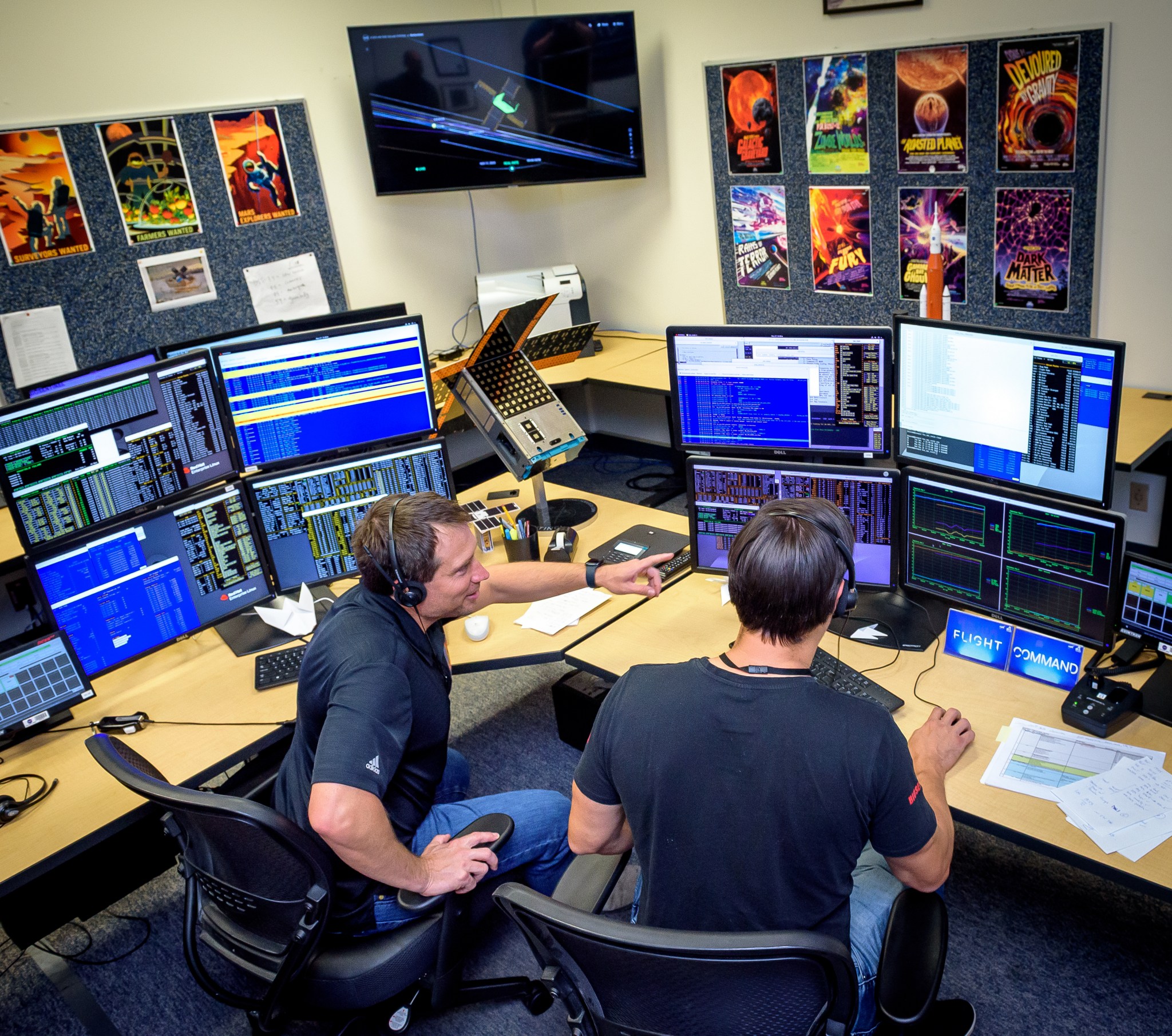
NASA has extended BioSentinel’s mission to continue collecting valuable deep space radiation data in the unique, high-radiation environment beyond low Earth orbit.
The Sun has an 11-year cycle, in which solar activity rises and falls in the form of powerful solar flares and giant eruptions called coronal mass ejections. As the solar cycle progresses from maximum to a declining phase, scientists expect strong solar activity to continue through 2026, with some of the strongest storms seen during this declining phase. These events send powerful bursts of energy, magnetic fields, and plasma into space which causes the aurora and can interfere with satellite signals. Solar radiation events from particles accelerated to high speeds can also pose a threat to astronauts in space.
Built on a history of small-satellite biology
The BioSentinel project builds on Ames’ history of carrying out biology studies in space using CubeSats – small satellites built from individual units each about four inches cubed. BioSentinel is a six-unit spacecraft weighing about 30 pounds. It houses the yeast cells in tiny compartments inside microfluidic cards – custom hardware that allows for the controlled flow of extremely small volumes of liquids that will activate and sustain the yeast. Data about radiation levels and the yeast’s growth and metabolism will be collected and stored aboard the spacecraft and then transmitted to the science team back on Earth.
A reserve set of microfluidic cards containing yeast samples will be activated if the satellite encounters a solar particle event, a radiation storm coming from the Sun that is a particularly severe health risk for future deep space explorers.
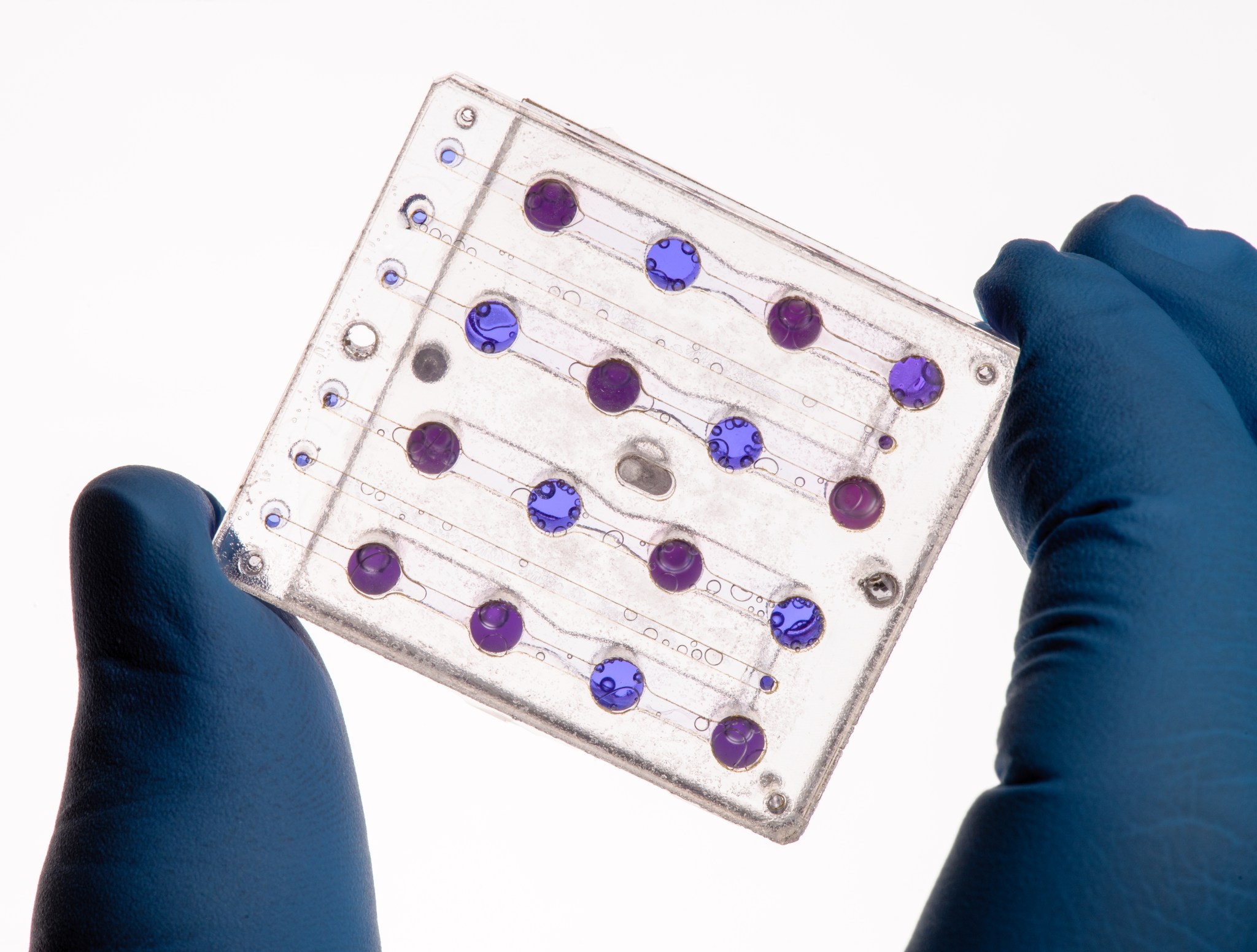
Multiple BioSentinels will compare various gravity and radiation environments
In addition to the pioneering BioSentinel mission that will traverse the deep space environment, identical experiments take place under different radiation and gravity conditions. One ran on the space station, in microgravity that is similar to deep space, but with comparatively less radiation. Other experiments took place on the ground, for comparison with Earth’s gravity and radiation levels. These additional versions show scientists how to compare Earth and space station-based science experiments – which can be conducted much more readily – to the fierce radiation that future astronauts will encounter in space.
Taken together, the BioSentinel data will be critical for interpreting the effects of space radiation exposure, reducing the risks associated with long-term human exploration, and confirming existing models of the effects of space radiation on living organisms.
Milestones
- December 2021: The BioSentinel ISS Control experiment launched to the International Space Station aboard SpaceX’s 24th commercial resupply services mission.
- January 2022: The BioSentinel ISS Control experiment began science operations aboard the International Space Station.
- February 2022: The BioSentinel ISS Control experiment began ground control science operations at NASA Ames.
- June 2022: The BioSentinel ISS Control experiment completed science operations. The hardware was returned to Earth in August aboard SpaceX’s CRS-25 Dragon.
- October 2022: The BioSentinel ISS Control experiment completed ground control science operations at NASA Ames.
- Nov. 16, 2022: BioSentinel launched to deep space aboard Artemis I.
- Dec. 5, 2022: BioSentinel began science operations in deep space.
- Dec. 19, 2022: BioSentinel began ground control science operations at NASA Ames.
- Nov. 16, 2024: BioSentinel marks two years of continuous radiation observations in deep space, now more than 30 million miles from Earth.
- Nov. 16, 2025: BioSentinel marks three years of continuous radiation observations in deep space, now more than 48 million miles from Earth.
Partners:
- NASA Ames leads the science, hardware design and development of the BioSentinel mission.
- Partner organizations include NASA’s Johnson Space Center in Houston and NASA’s Jet Propulsion Laboratory in Southern California.
- BioSentinel is funded by the Mars Campaign Development (MCO) Division within the Exploration Systems Development Mission Directorate at NASA headquarters in Washington.
- BioSentinel’s extended mission is supported by the Heliophysics Division of NASA’s Science Mission Directorate at NASA headquarters in Washington, the MCO, and the NASA Electronic Parts and Packaging Program within NASA’s Space Technology Mission Directorate at NASA Headquarters in Washington.
Learn more:
- NASA story: NASA’s BioSentinel Studies Solar Radiation as Earth Watches Aurora (Sept. 2024)
- NASA story: NASA Extends BioSentinel’s Mission to Measure Deep Space Radiation, Aug. 2023
- NASA story: First Deep Space Biology Experiment Begins, Follow Along in Real-Time, Dec. 2022
- NASA story: BioSentinel Underway After Successful Lunar Flyby, Nov. 2022
- NASA story: Artemis I to Launch First-of-a-Kind Deep Space Biology Mission, Aug. 2022
- NASA video: Why NASA is Sending Yeast to Deep Space, Feb. 2022
- NASA podcast: “Houston We Have a Podcast,” Deep Space Biology, Jan. 2022
- NASA blog: All Artemis I Secondary Payloads Installed in Rocket’s Orion Stage Adapter, Oct. 2021
- NASA blog; NASA Prepares Three More CubeSat Payloads for Artemis I Mission. Jul. 2021
- NASA story: NASA’s BioSentinel Team Prepares CubeSat For Deep Space Flight, Apr. 2021
- NASA in Silicon Valley podcast episode: Sharmila Bhattacharya on Studying How Biology Changes in Space, Mar. 2018
- NASA story: For Holiday Celebrations and Space Radiation, Yeast is the Key, Dec. 2018
For researchers:
- NASA Space Station Research Explorer: BioSentinel ISS Control Experiment
- NASA technical webpage: BioSentinel
For news media:
- Members of the news media interested in covering this topic should reach out to the NASA Ames newsroom.

